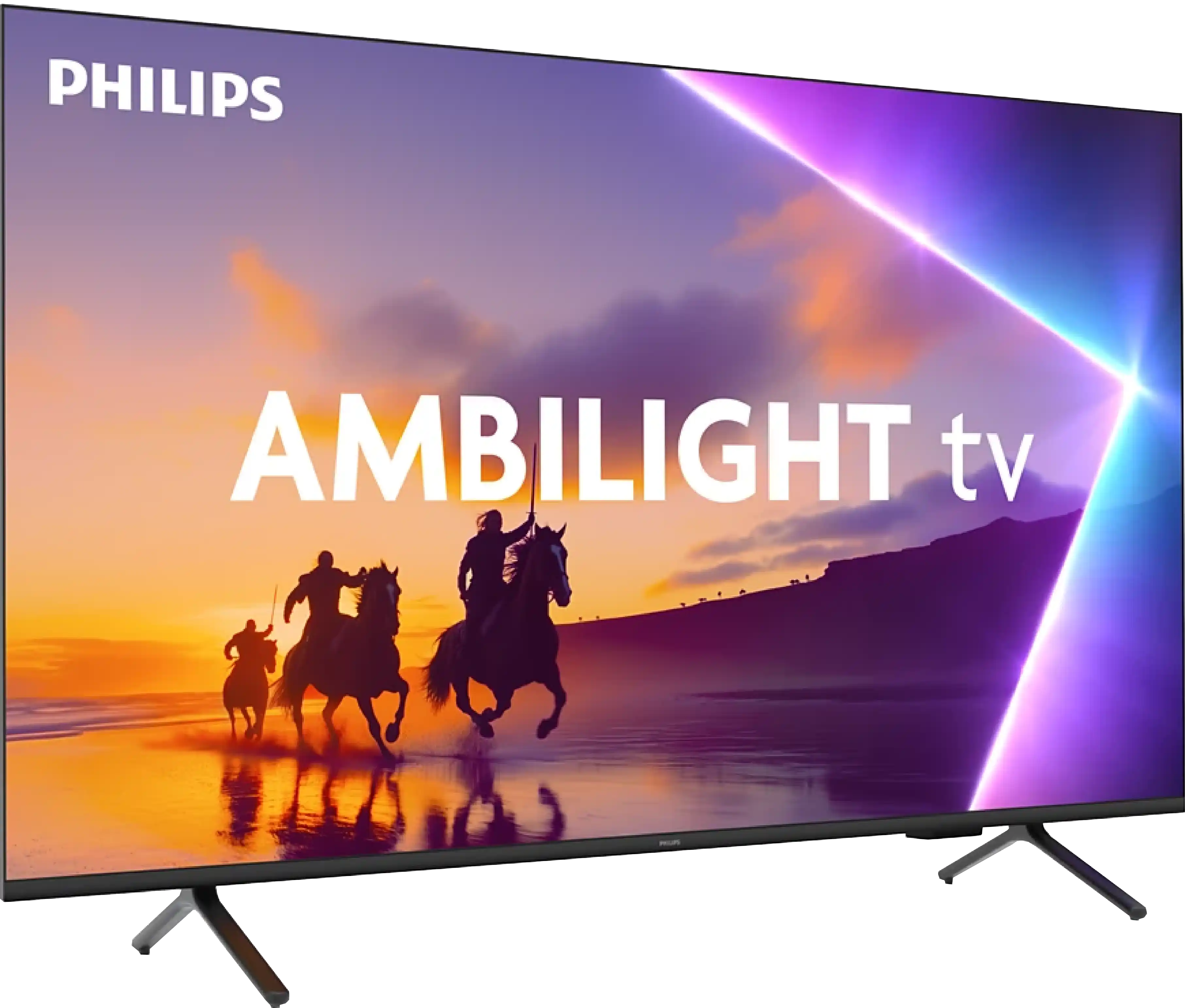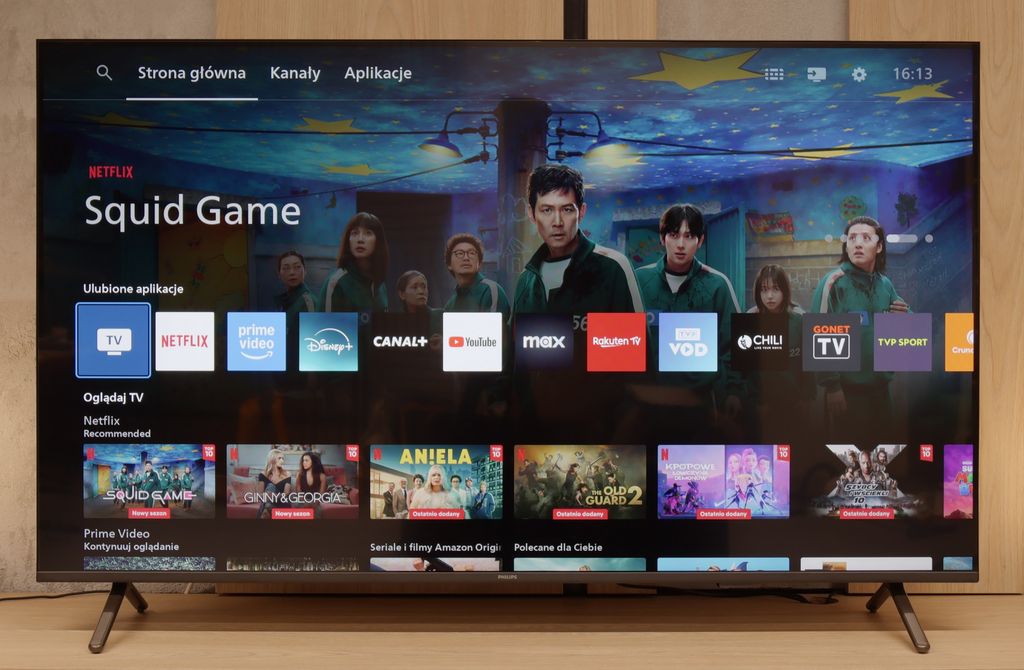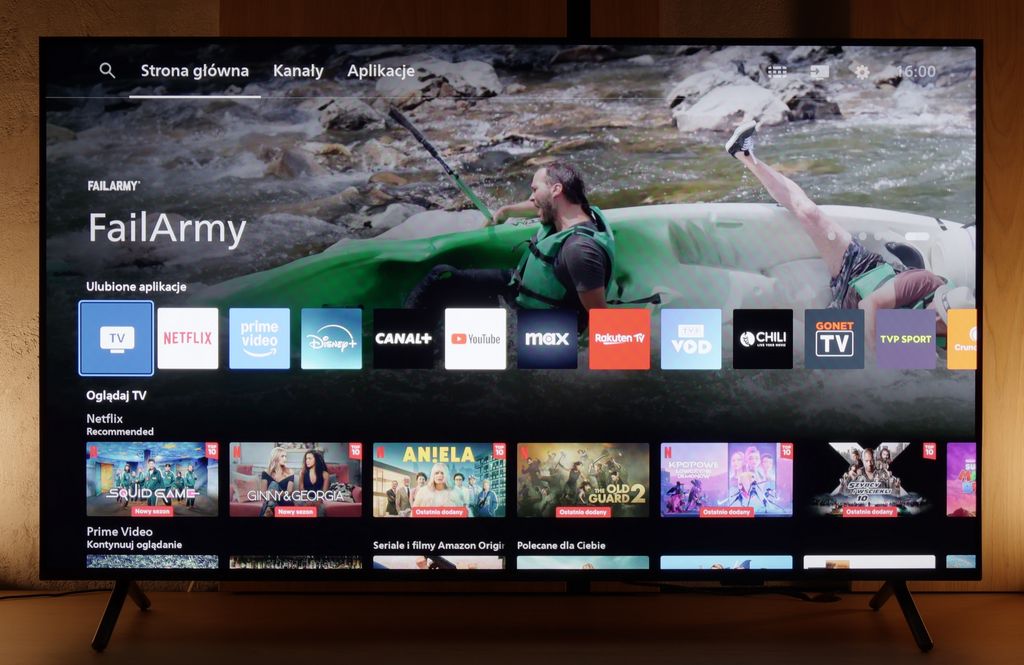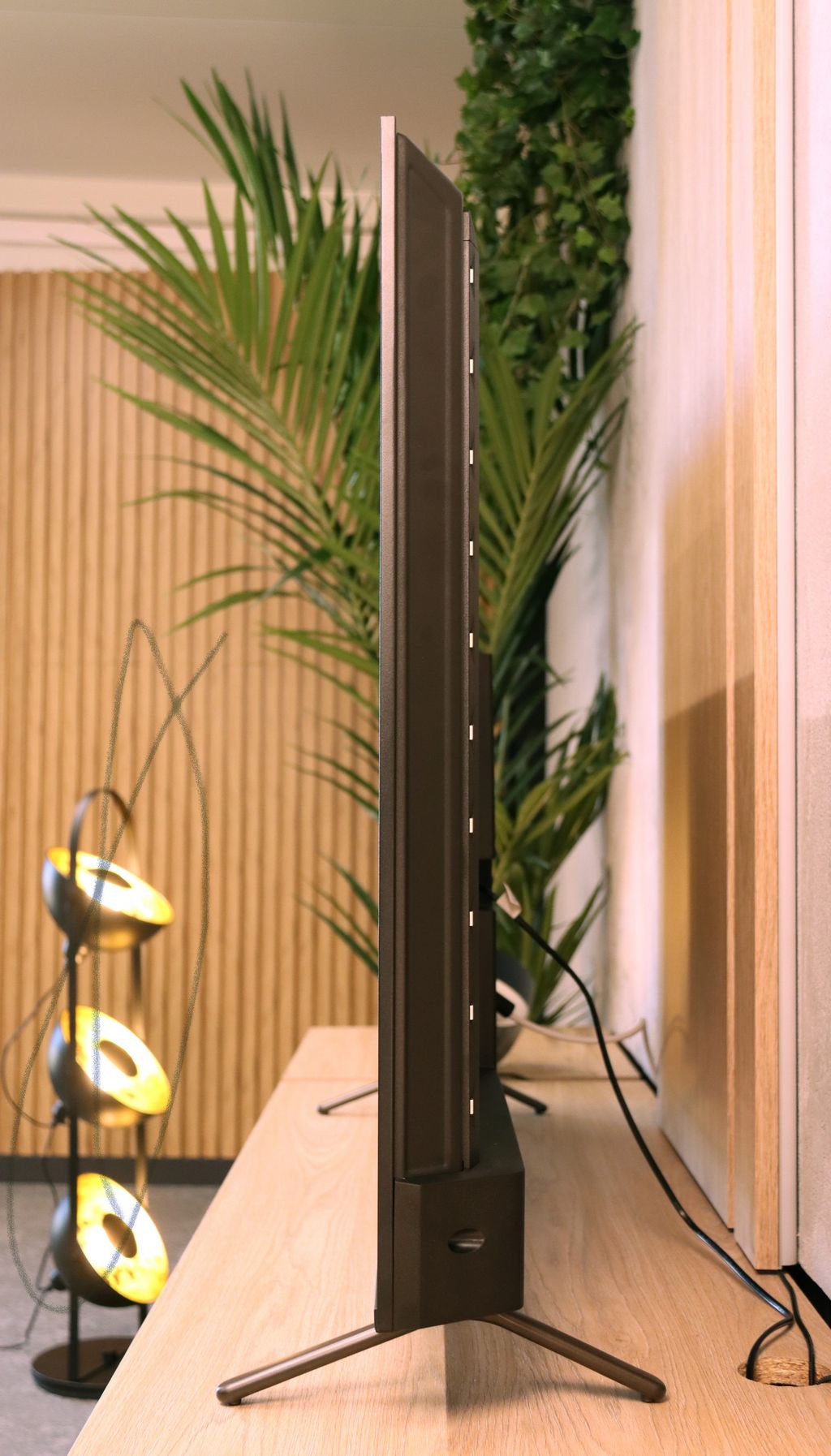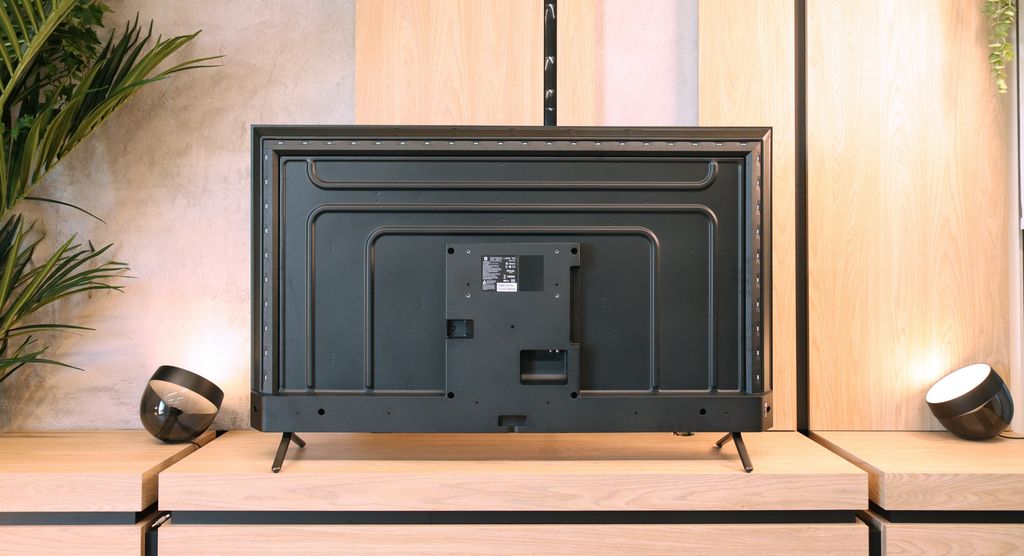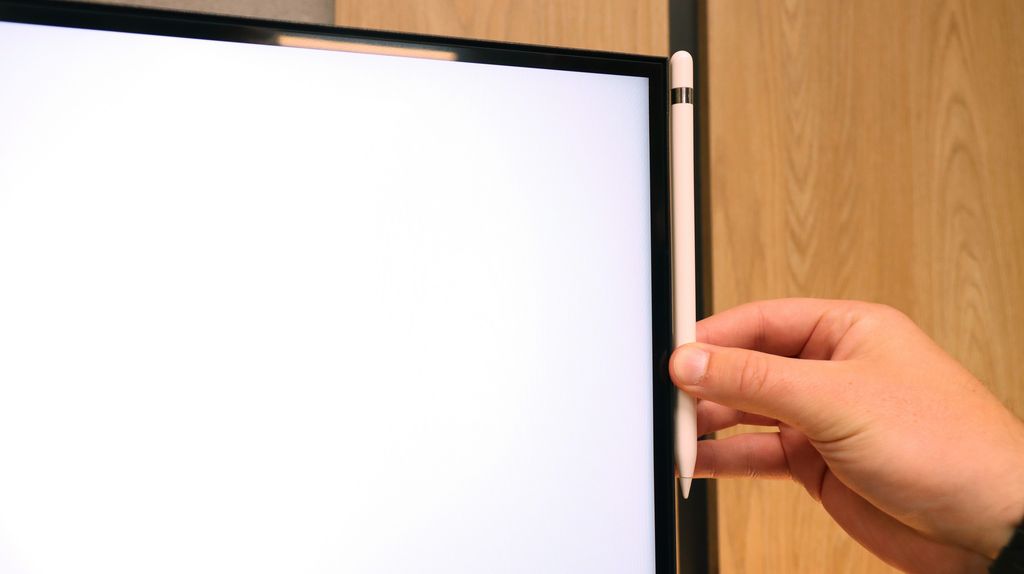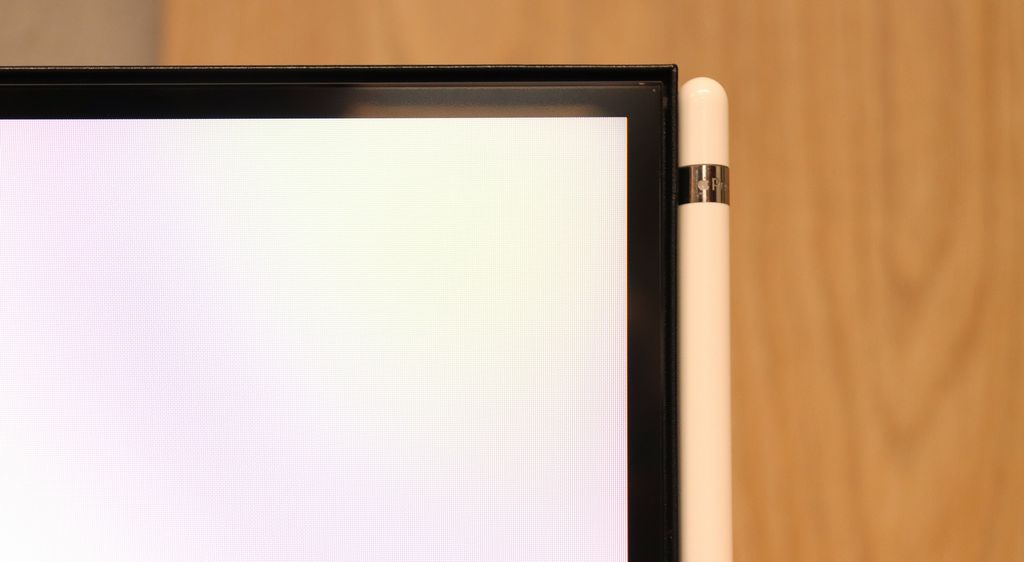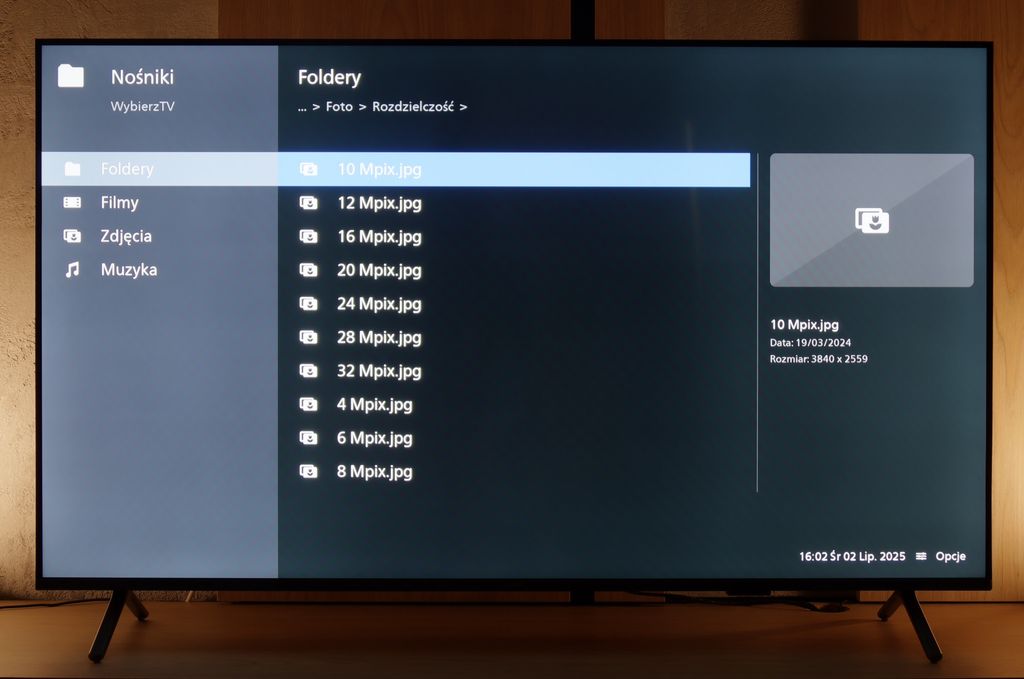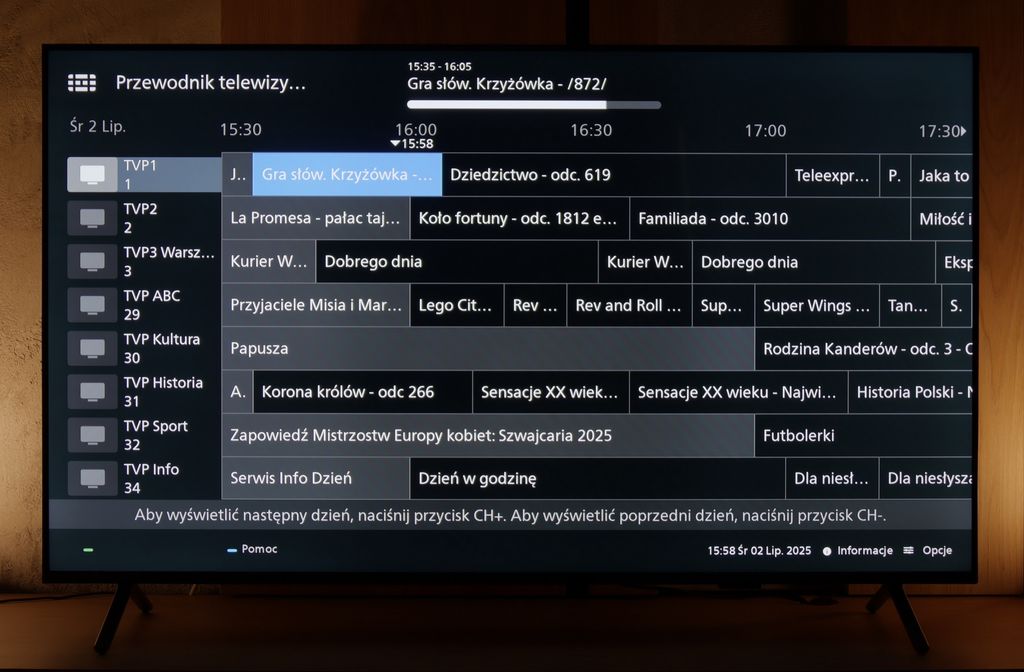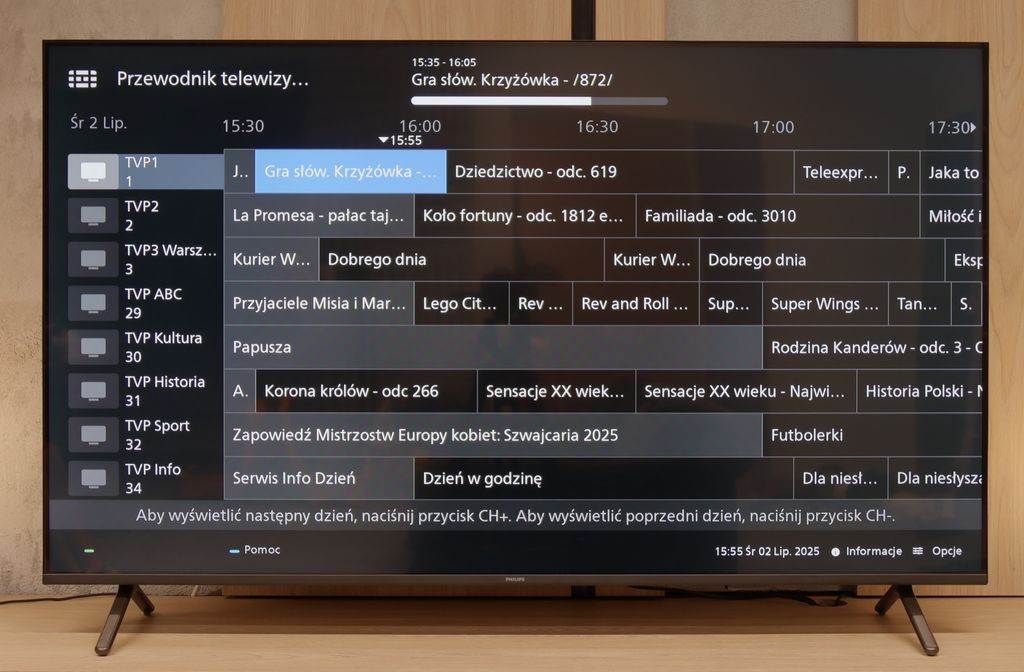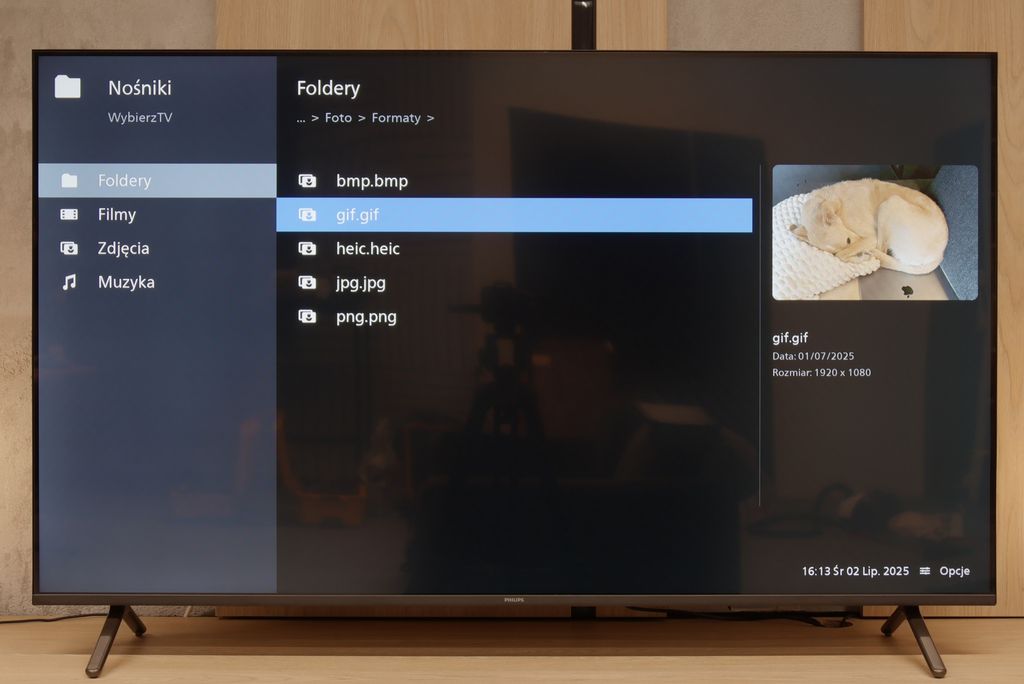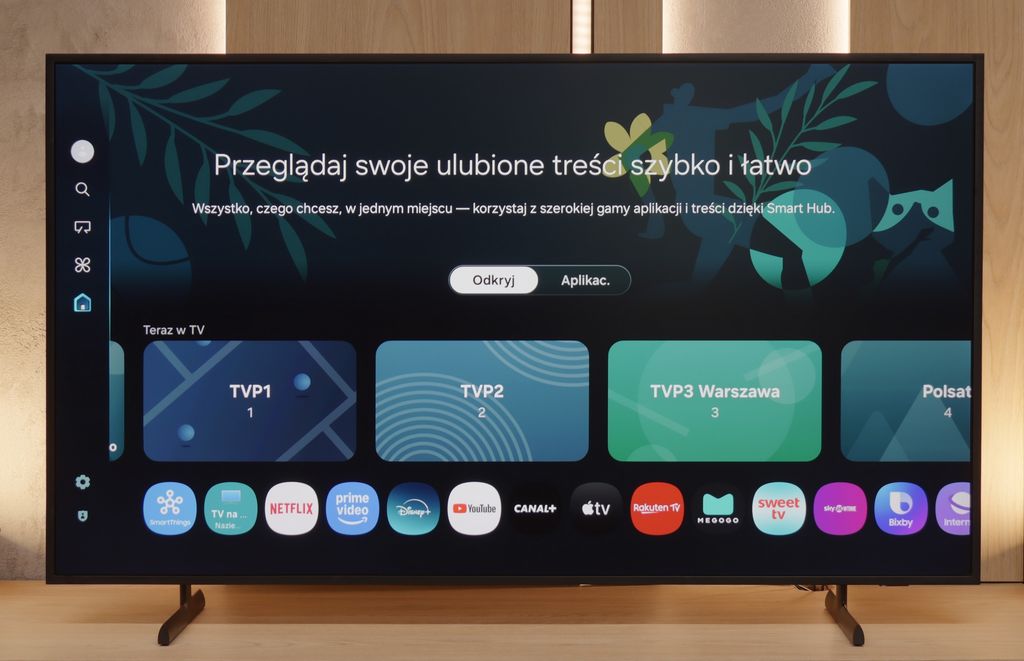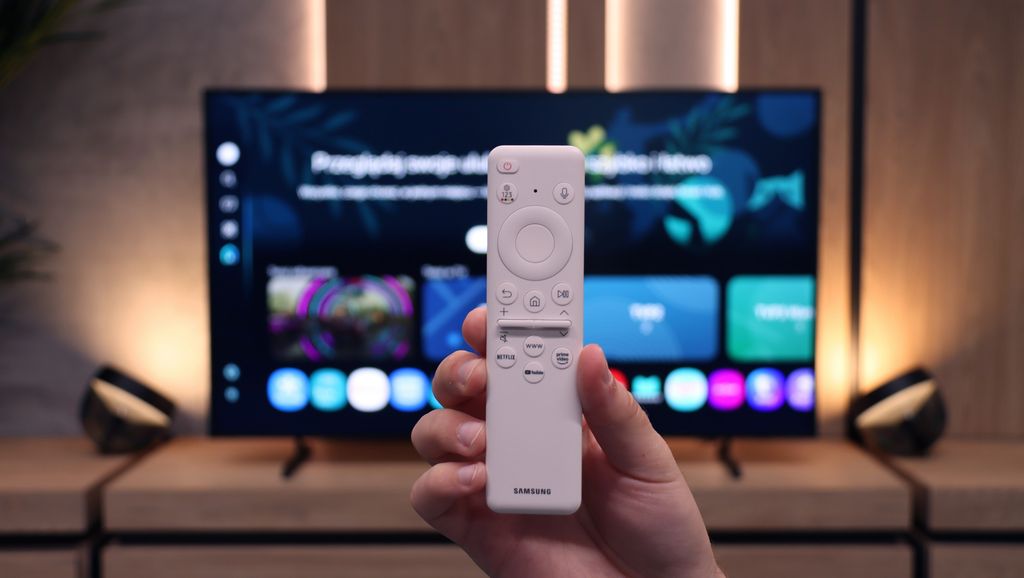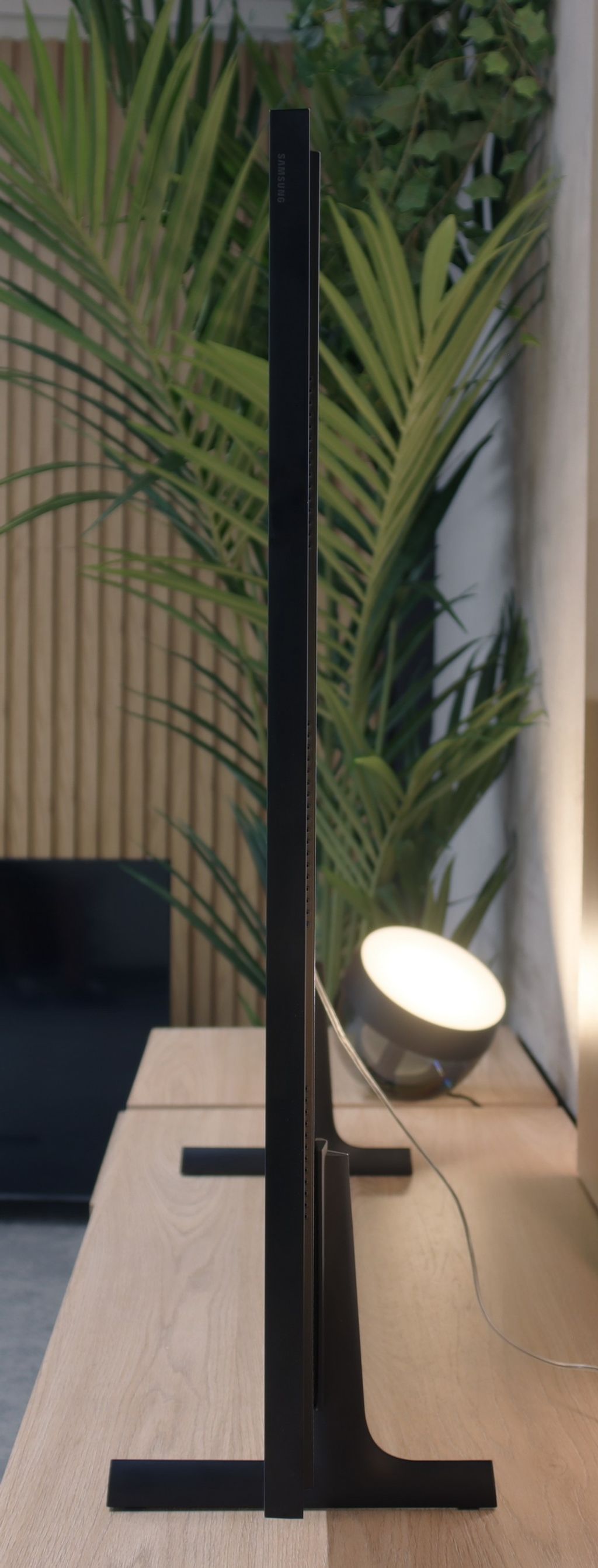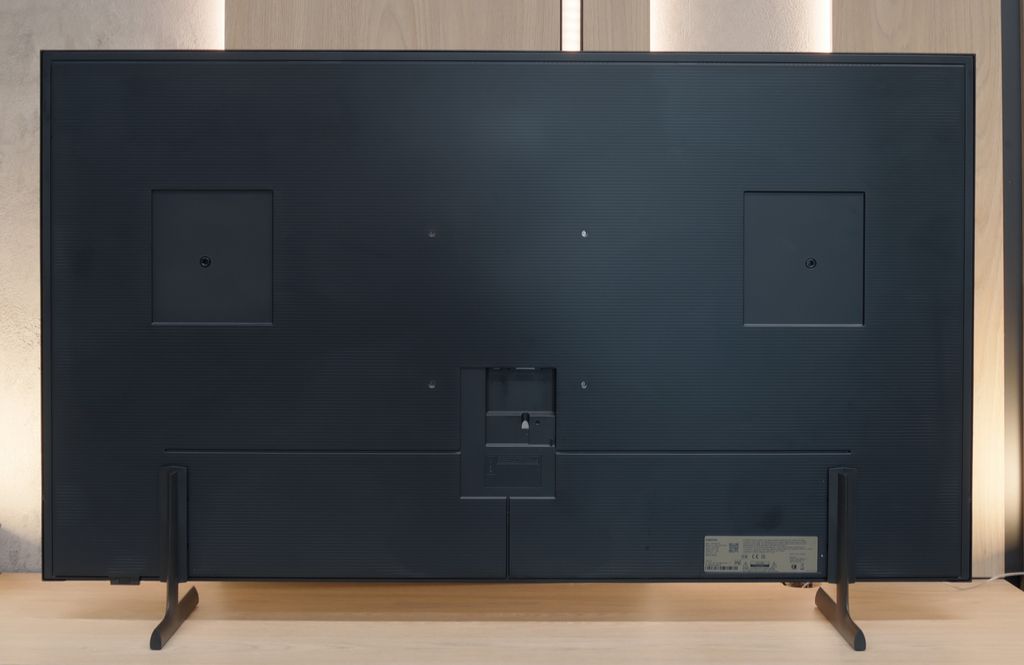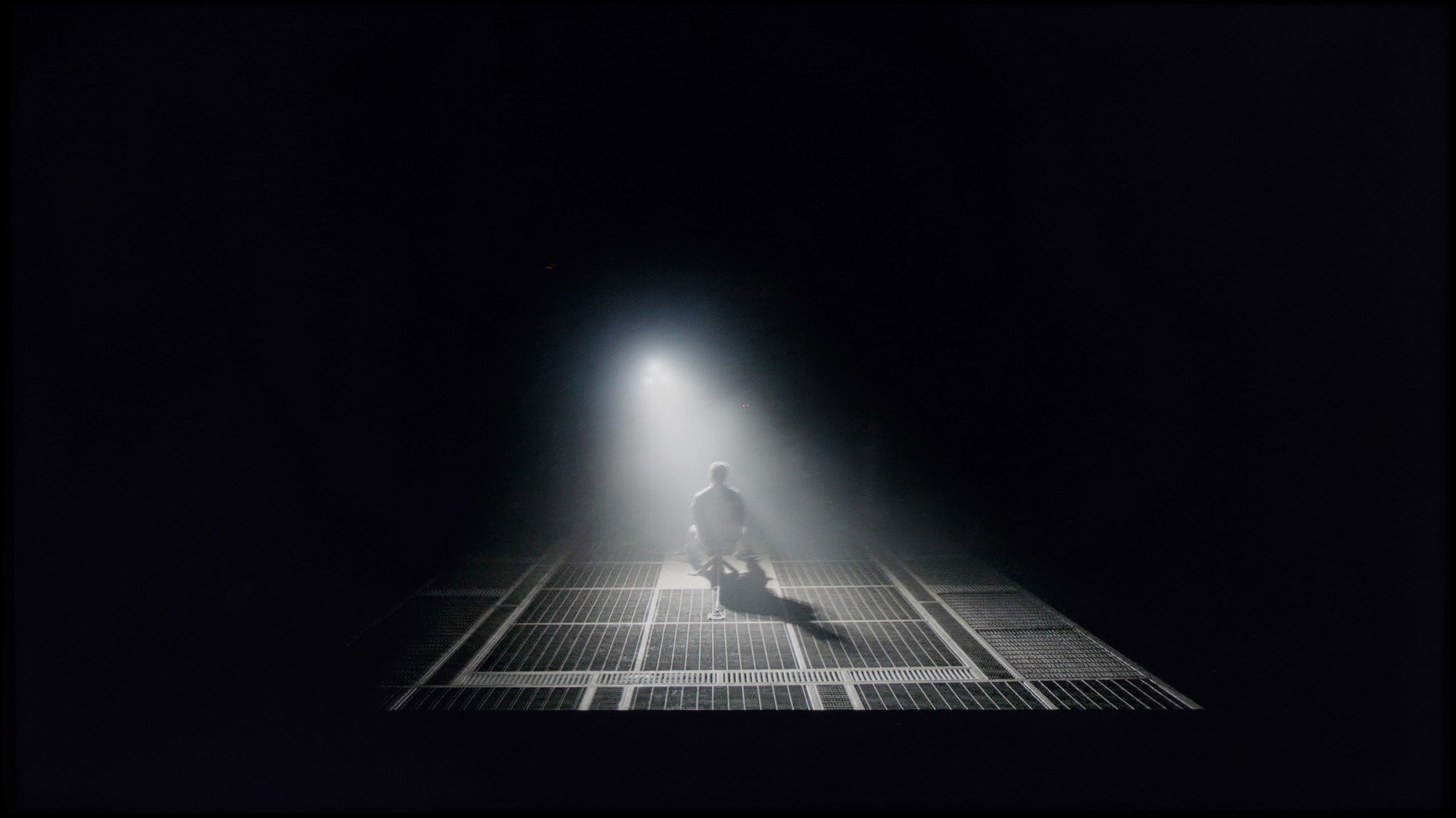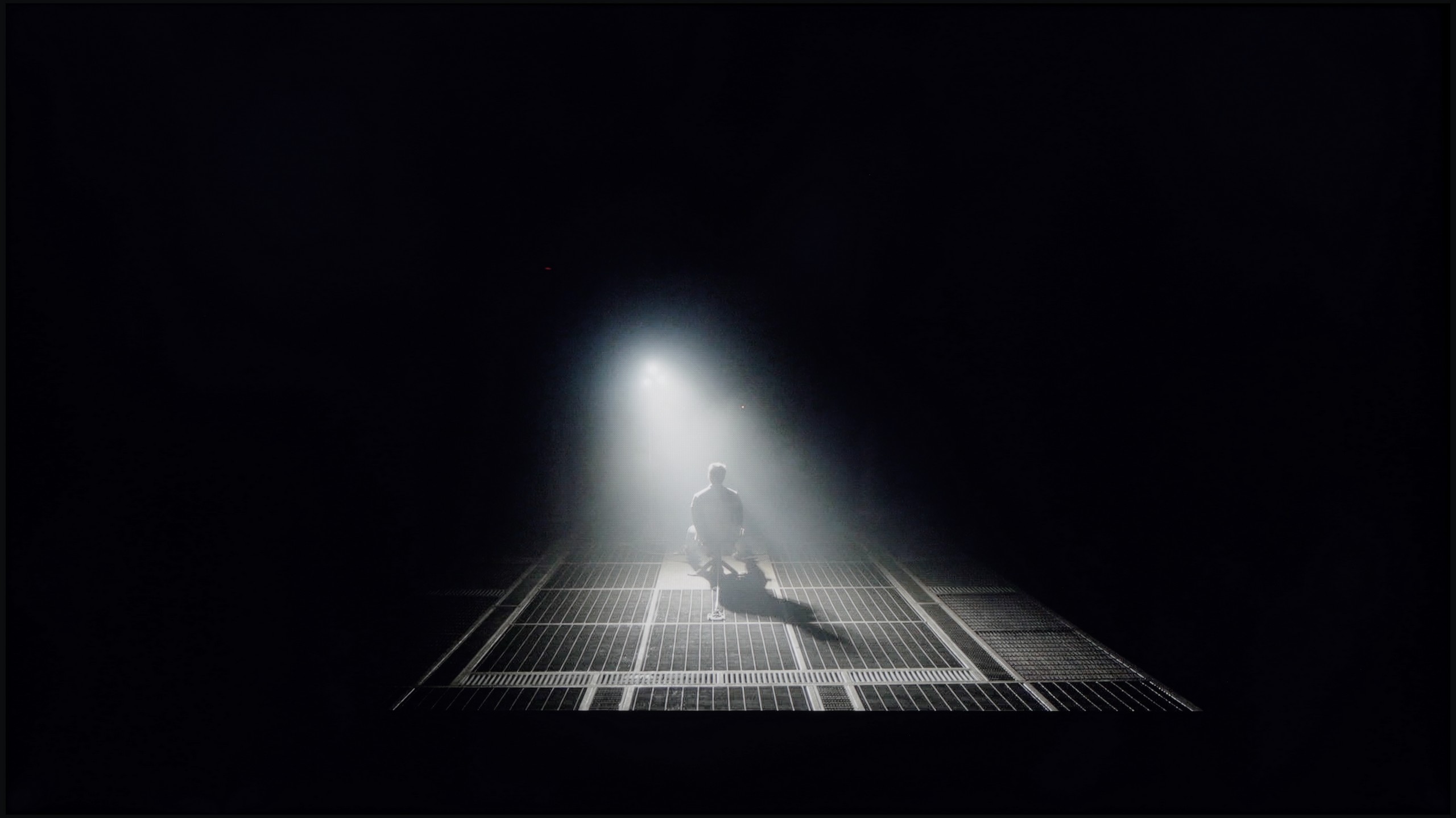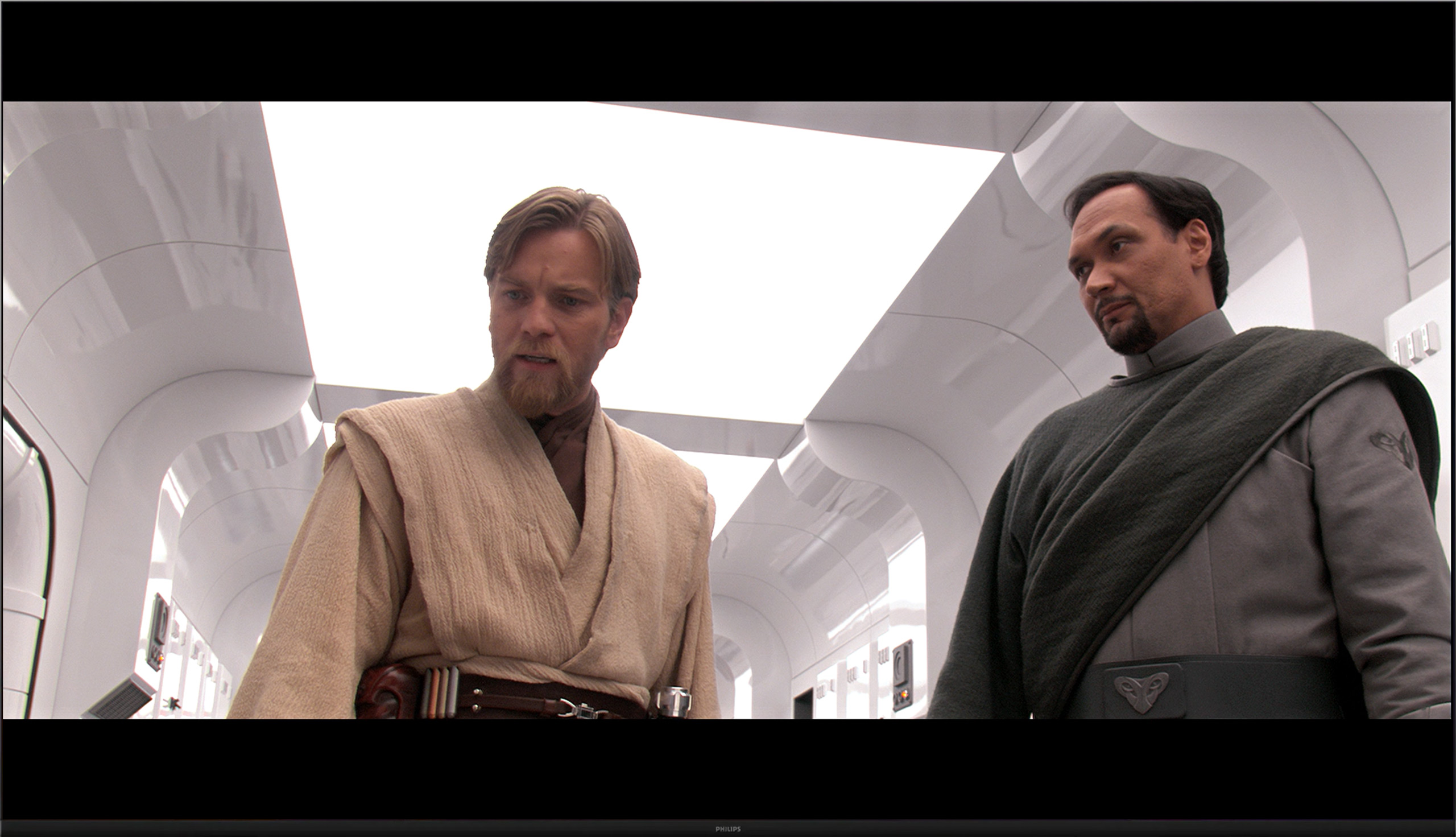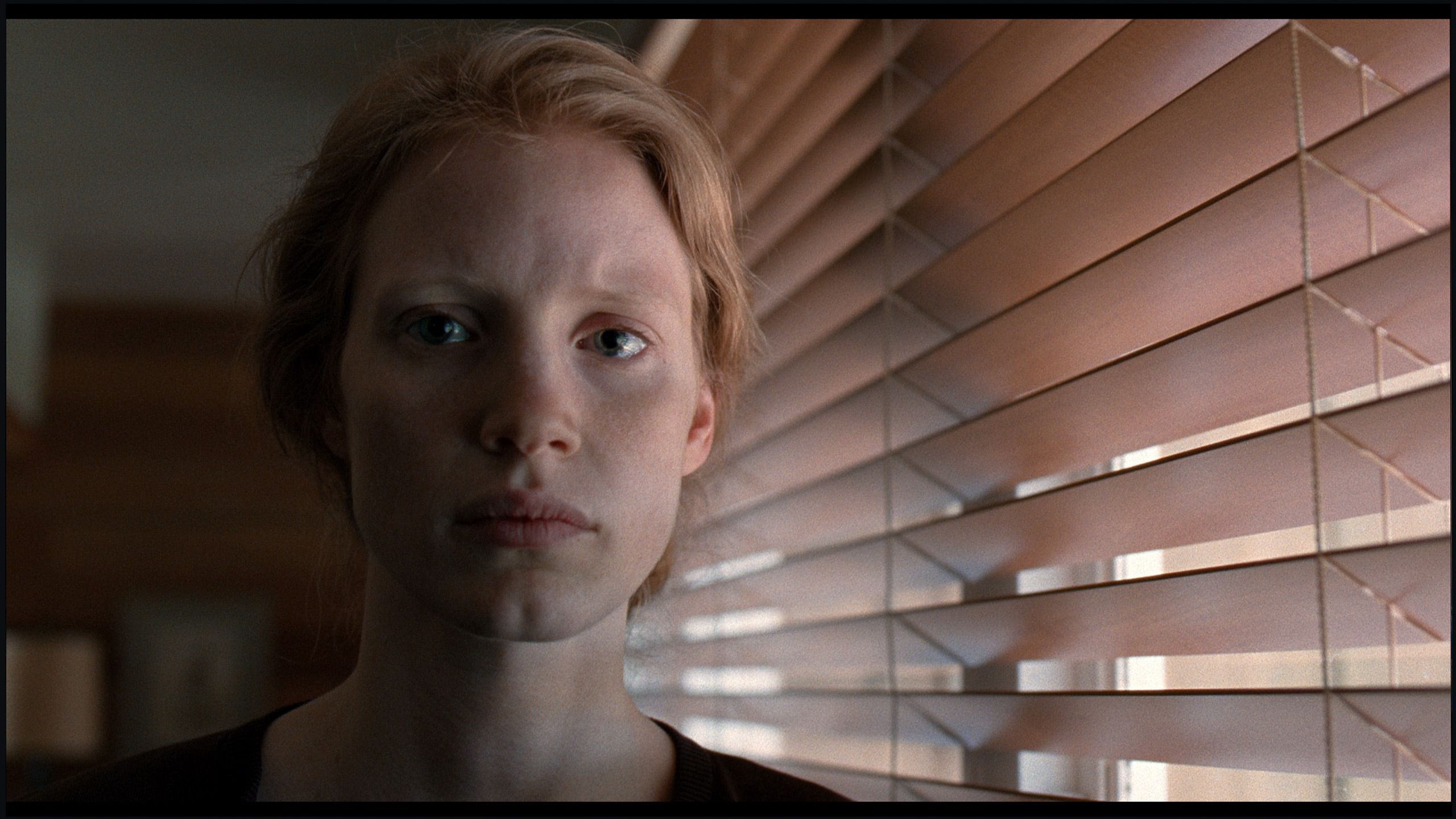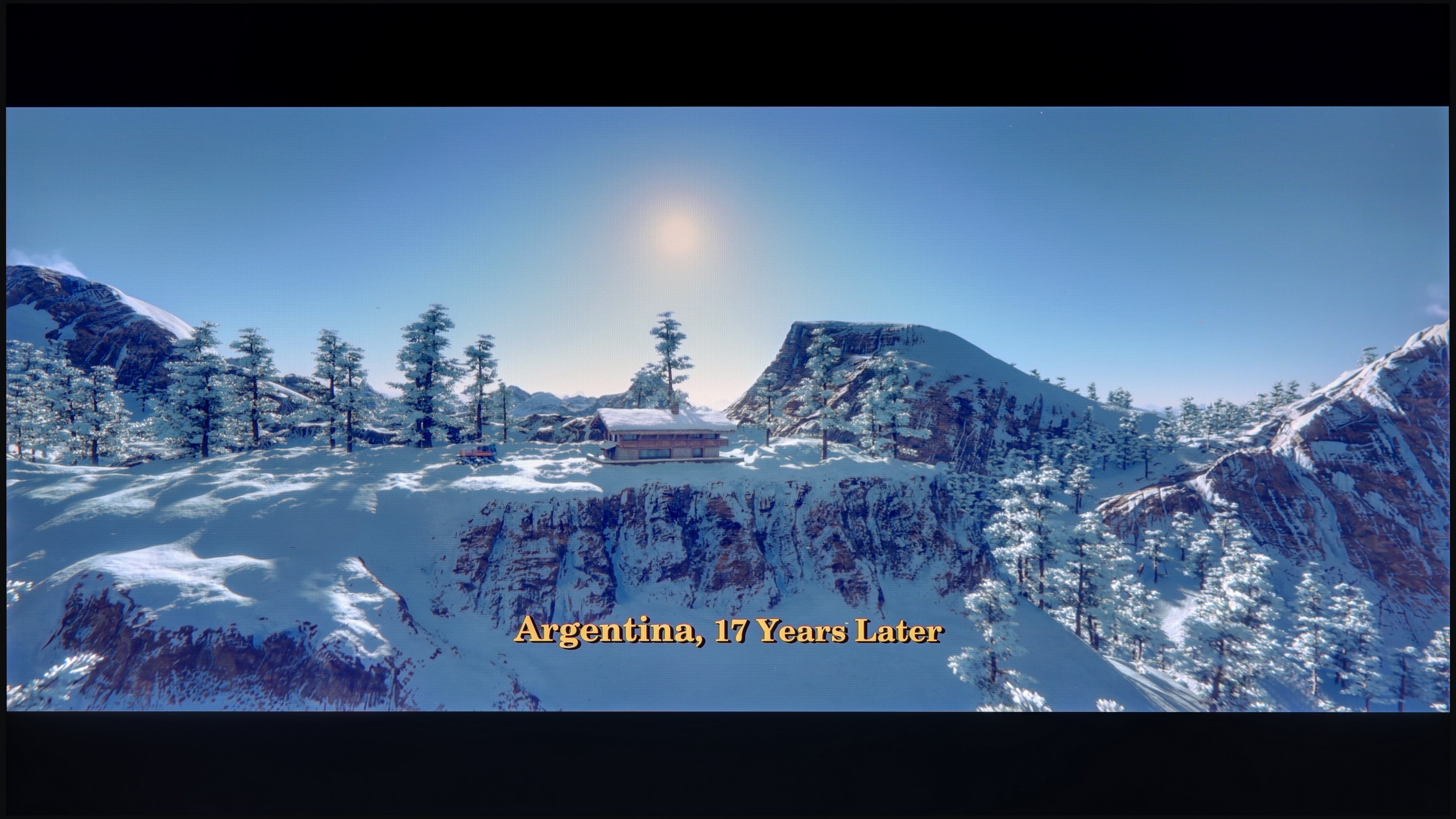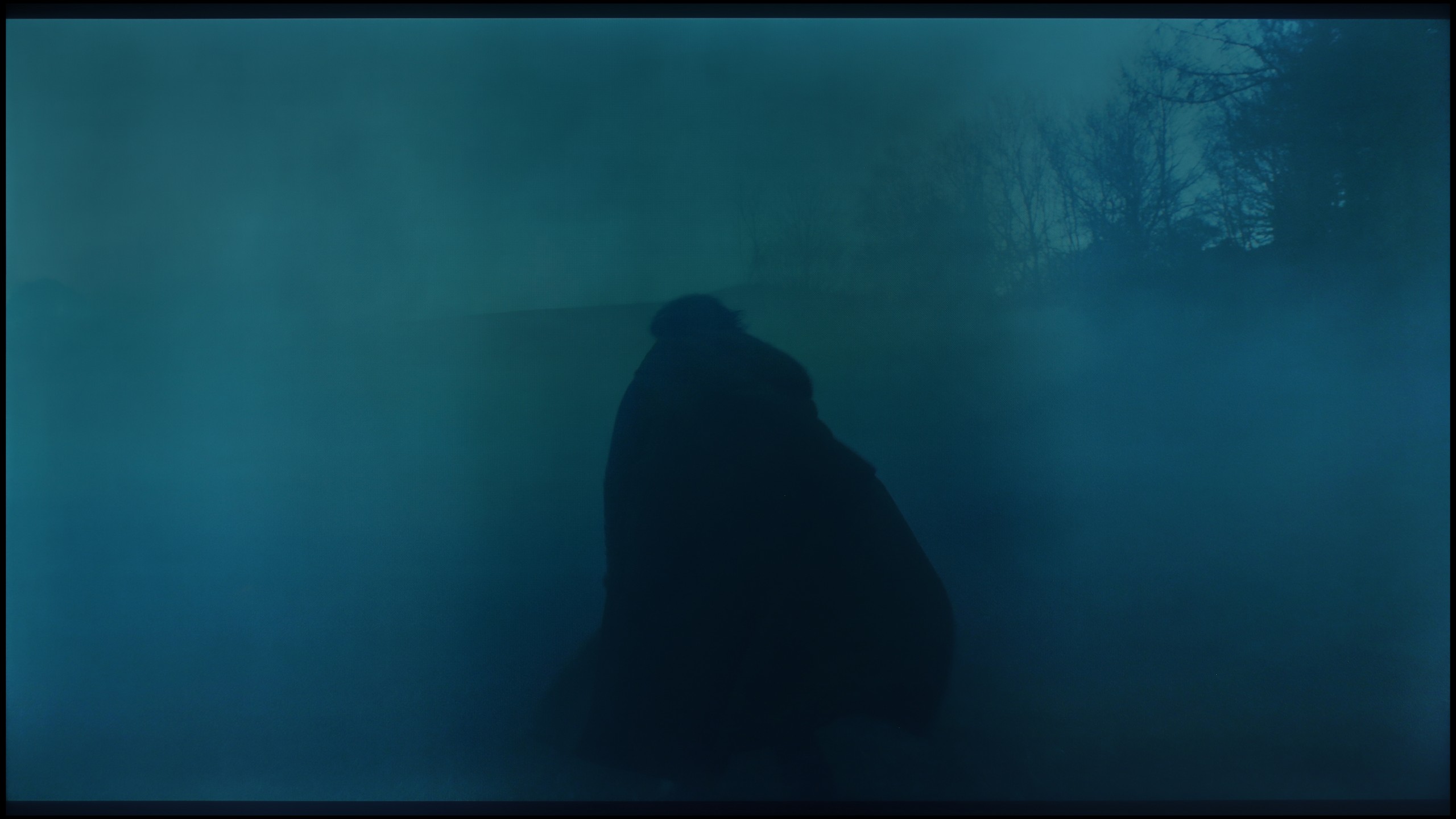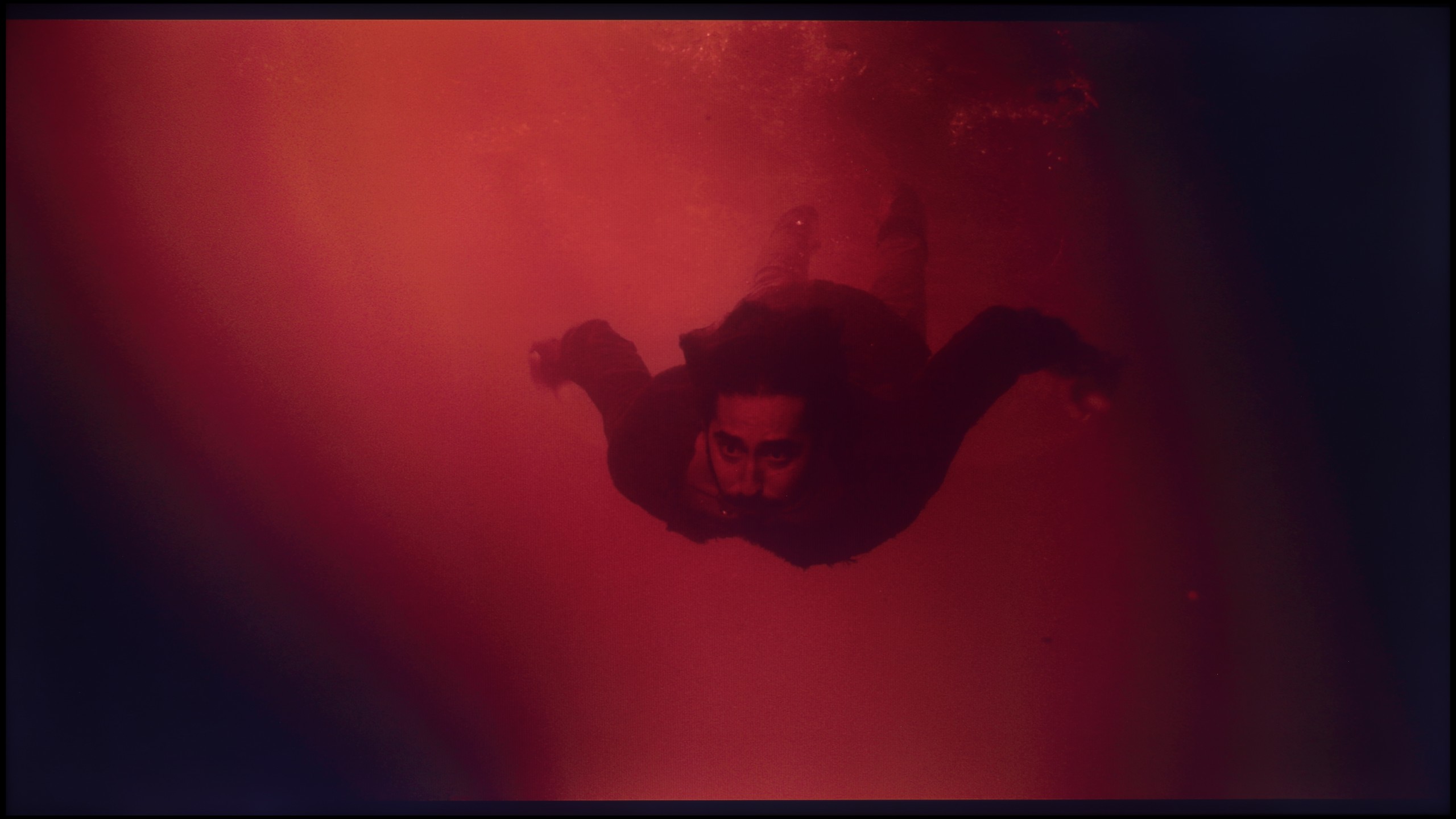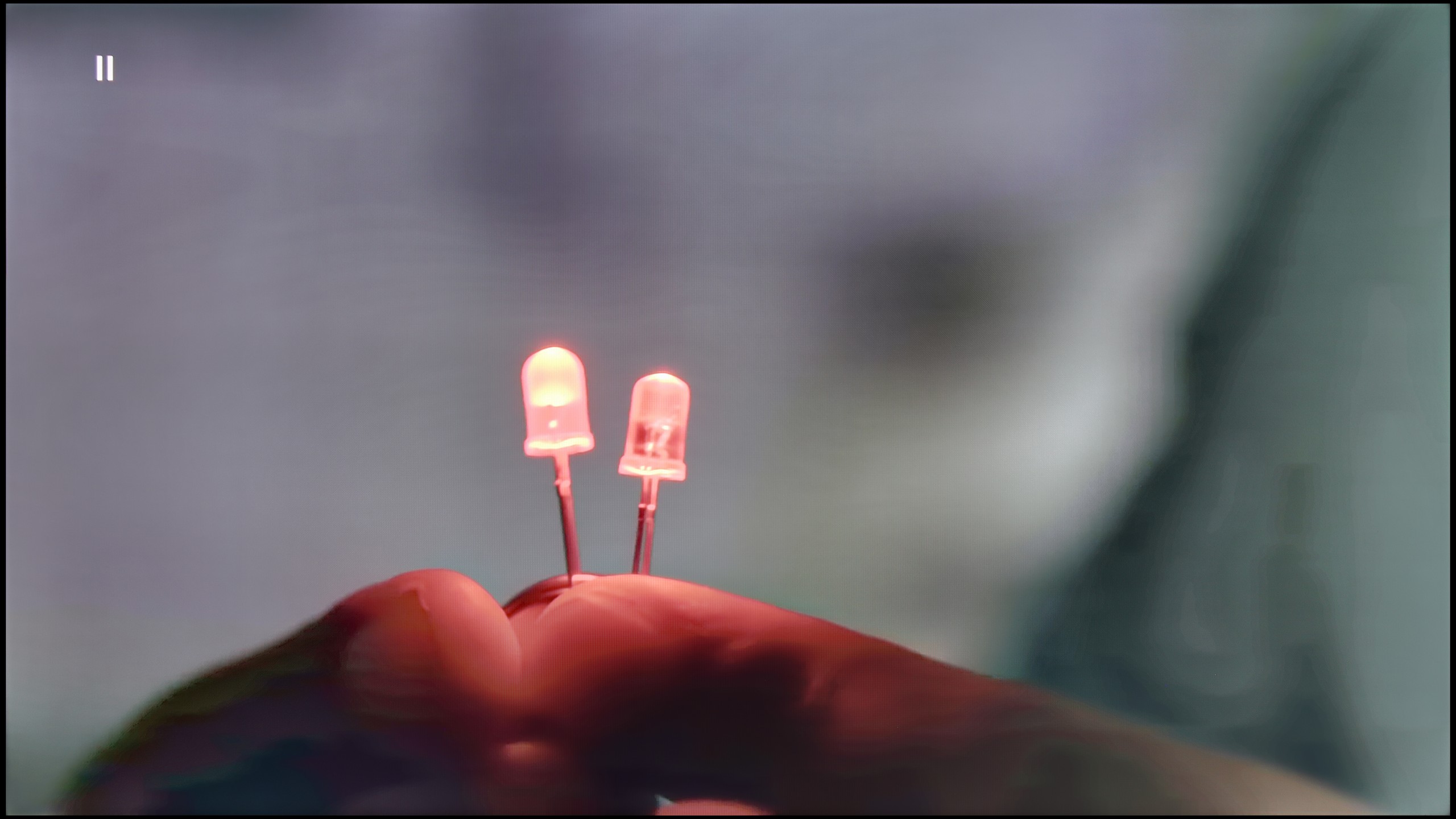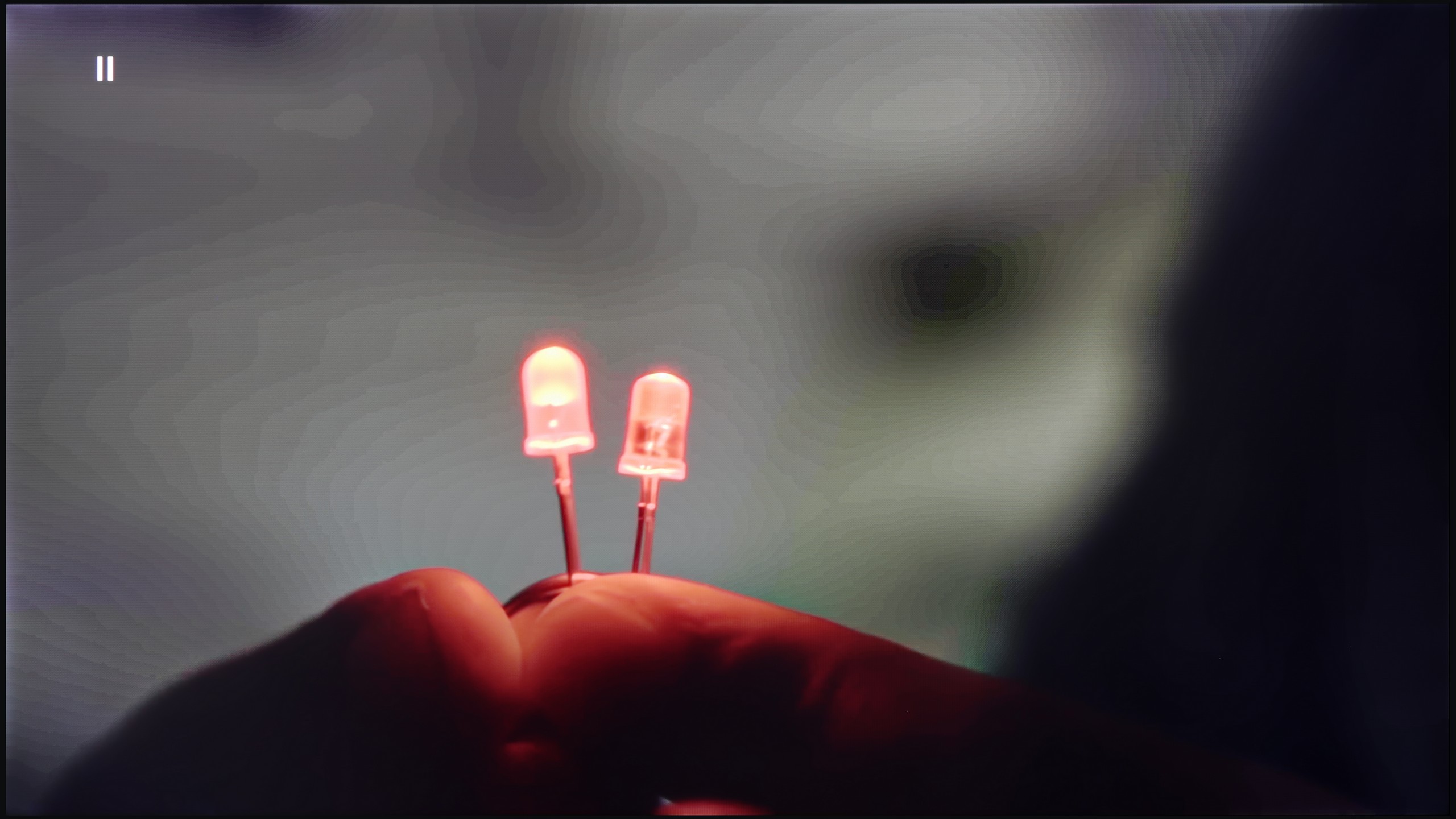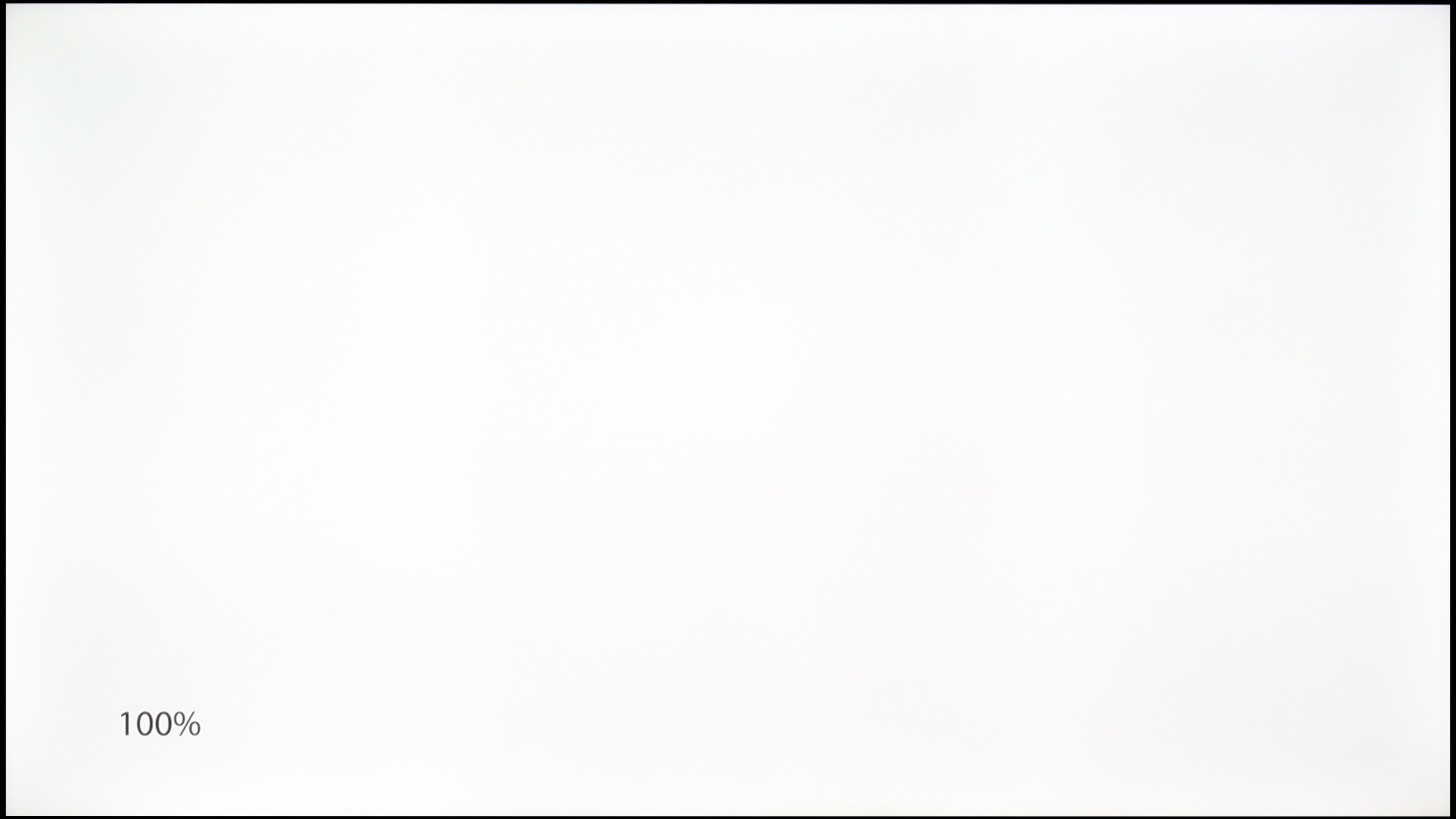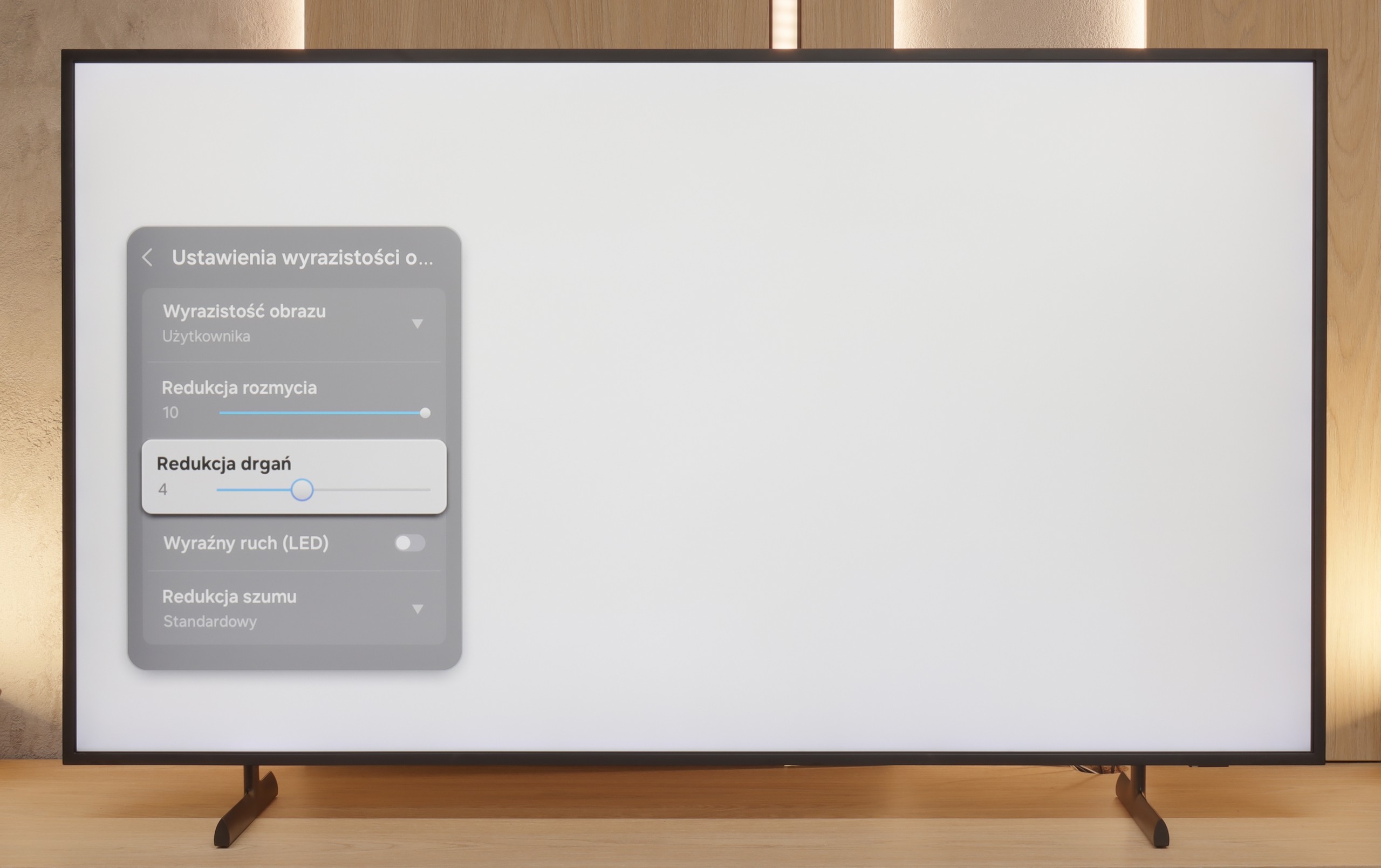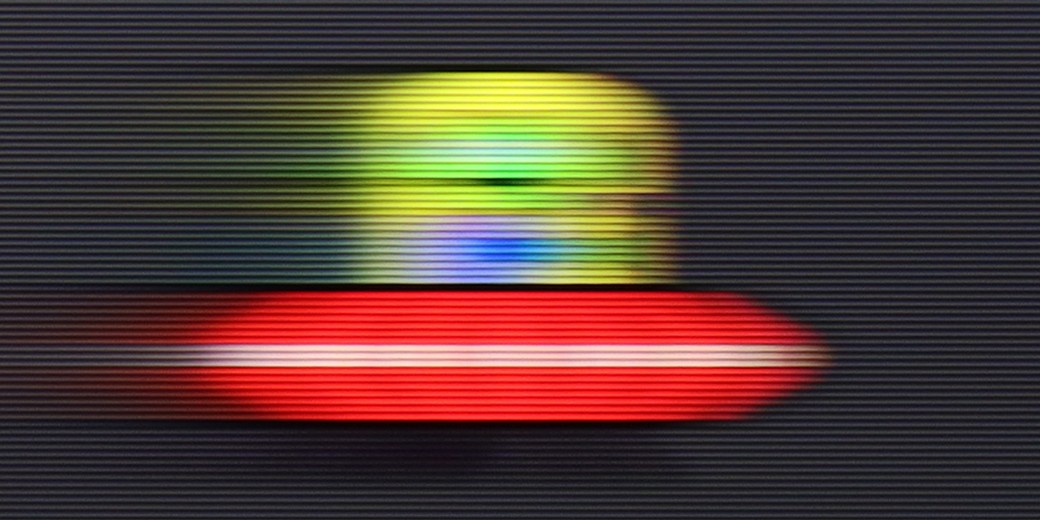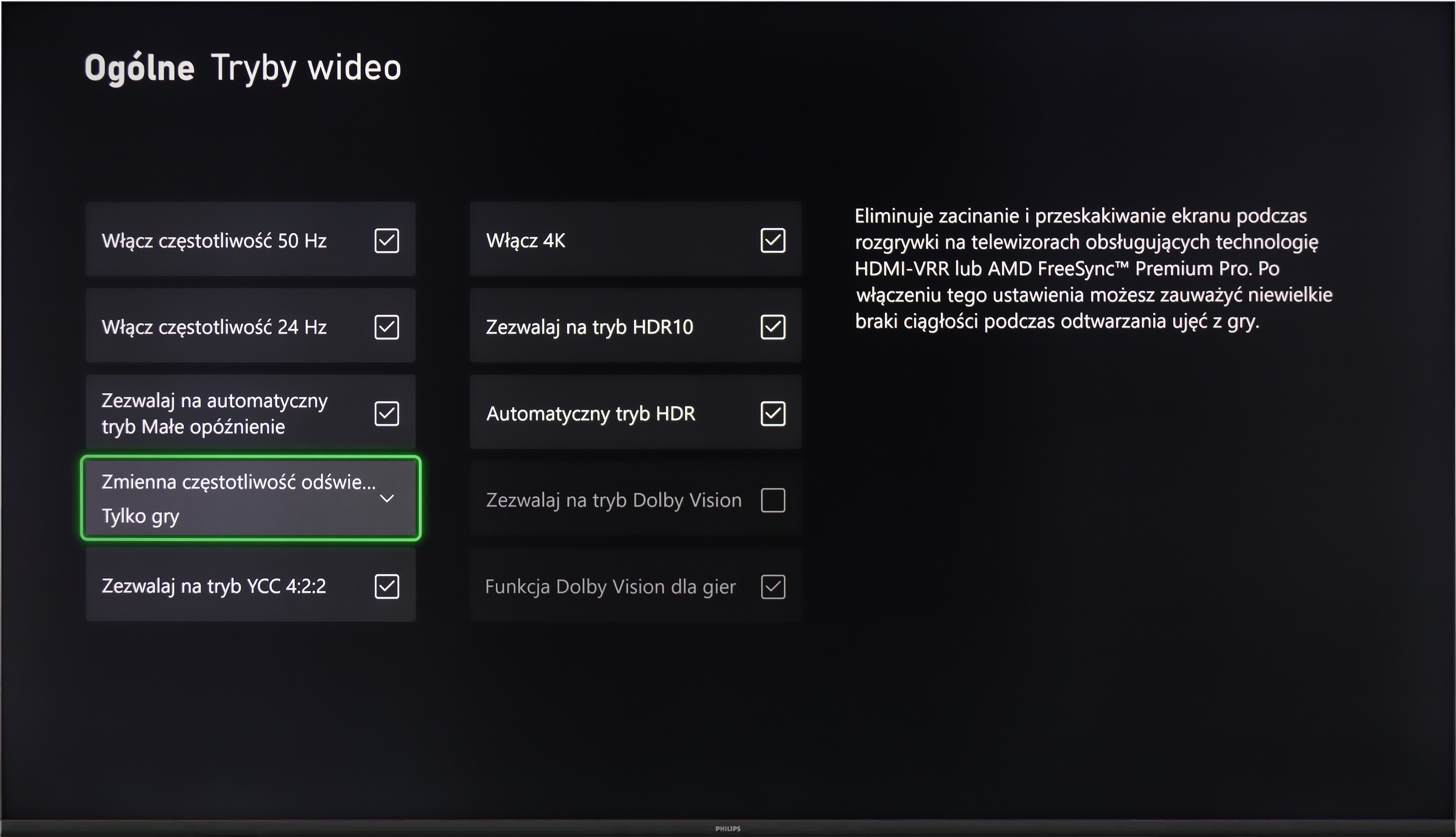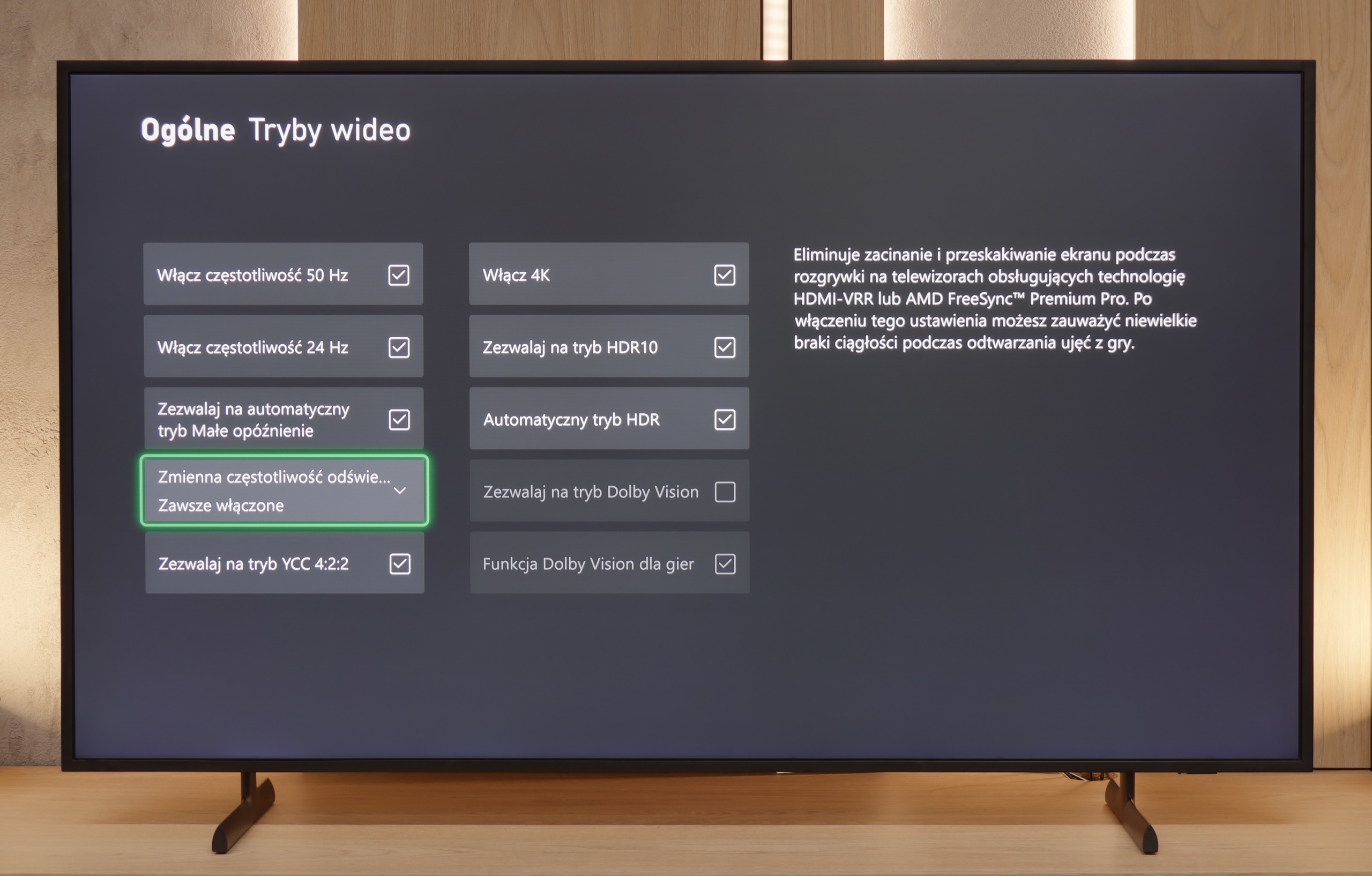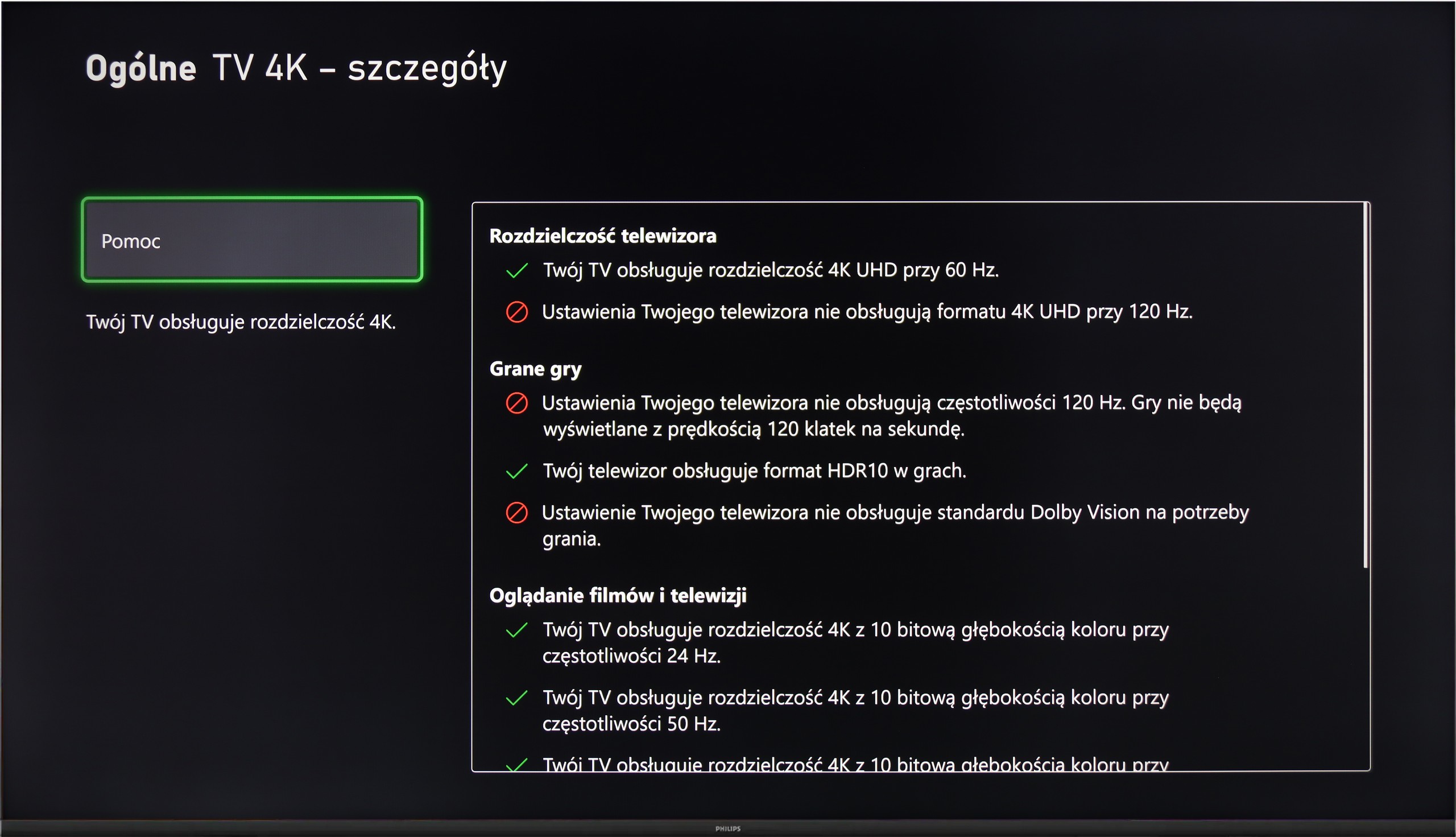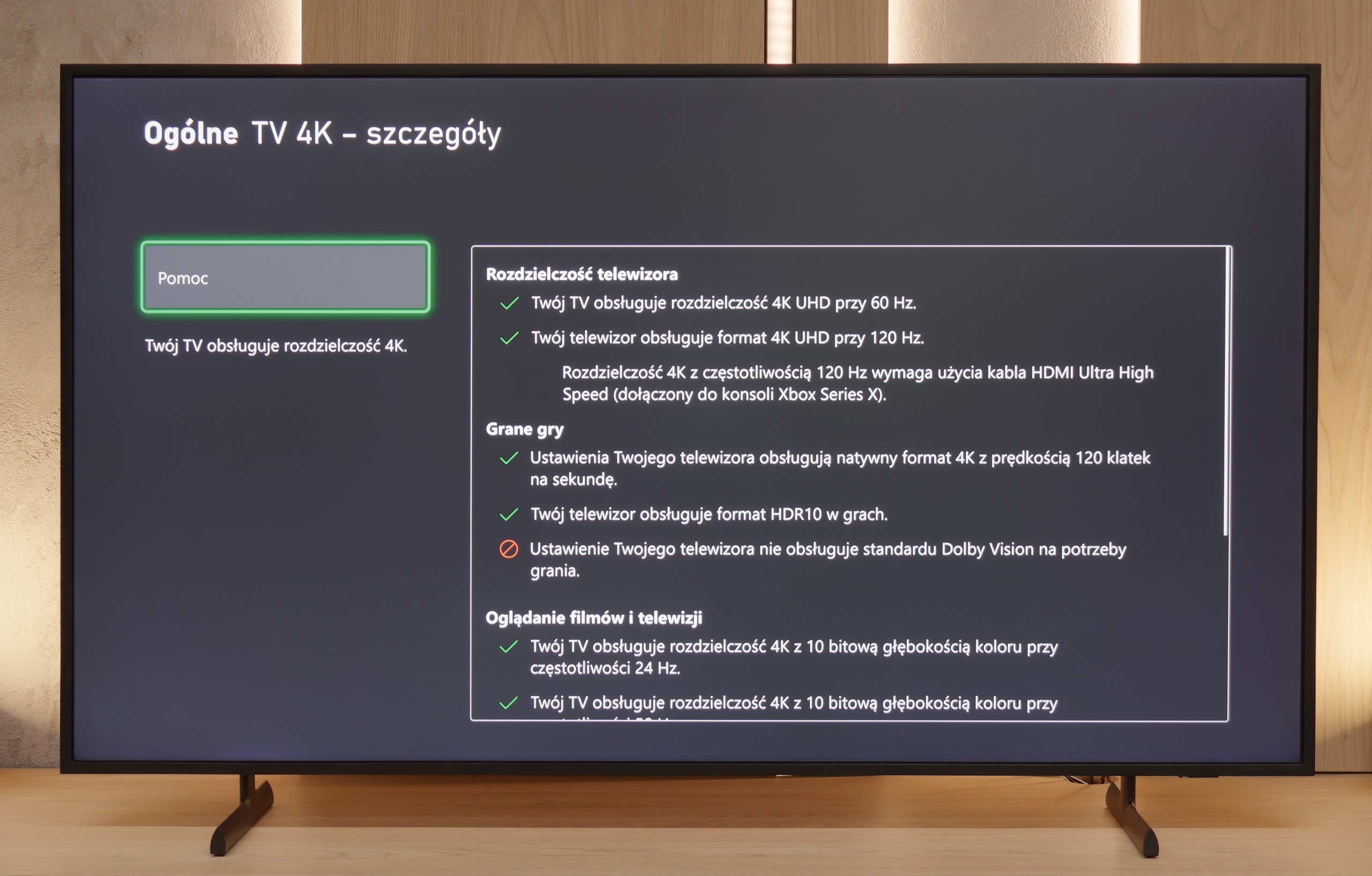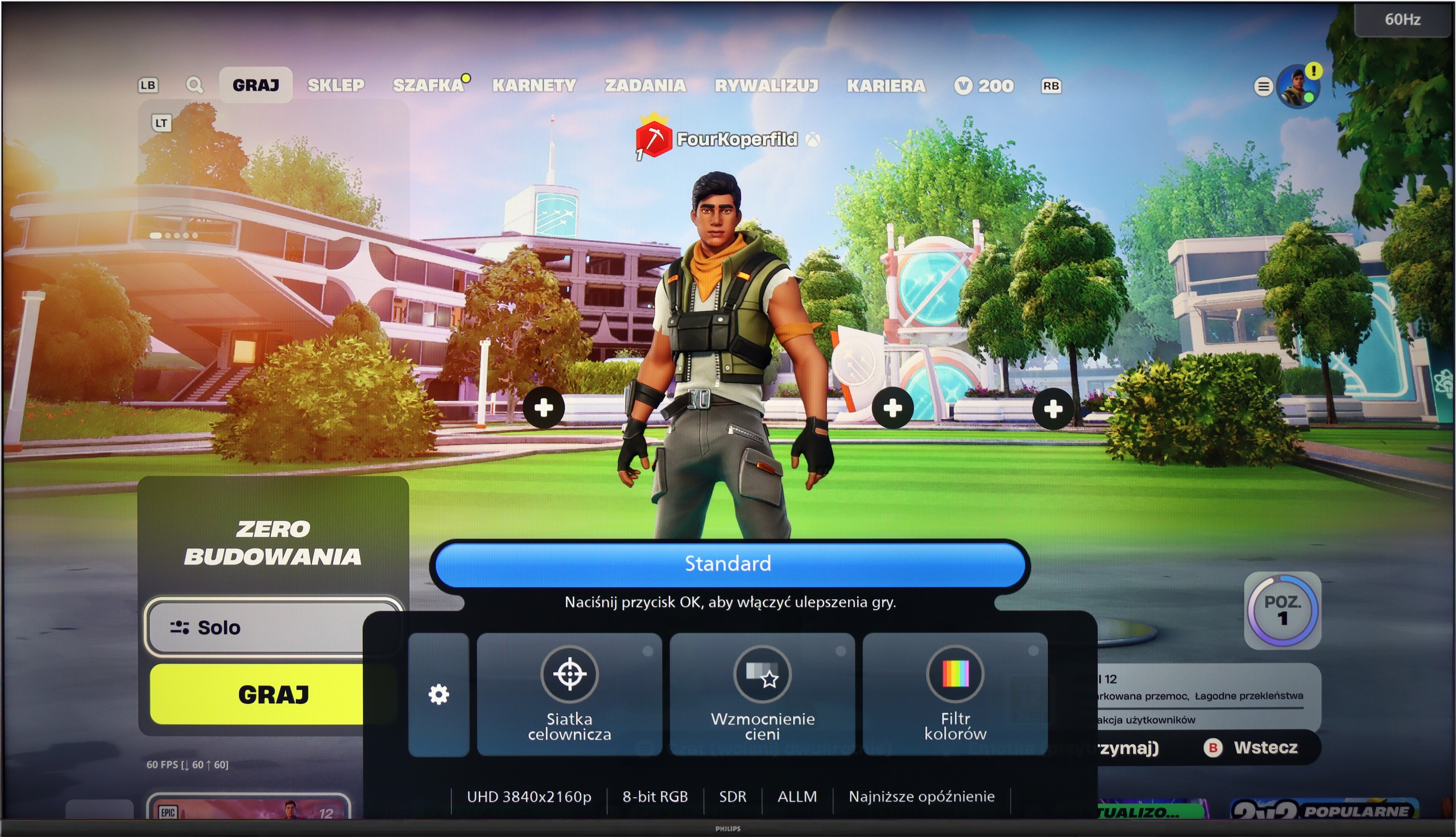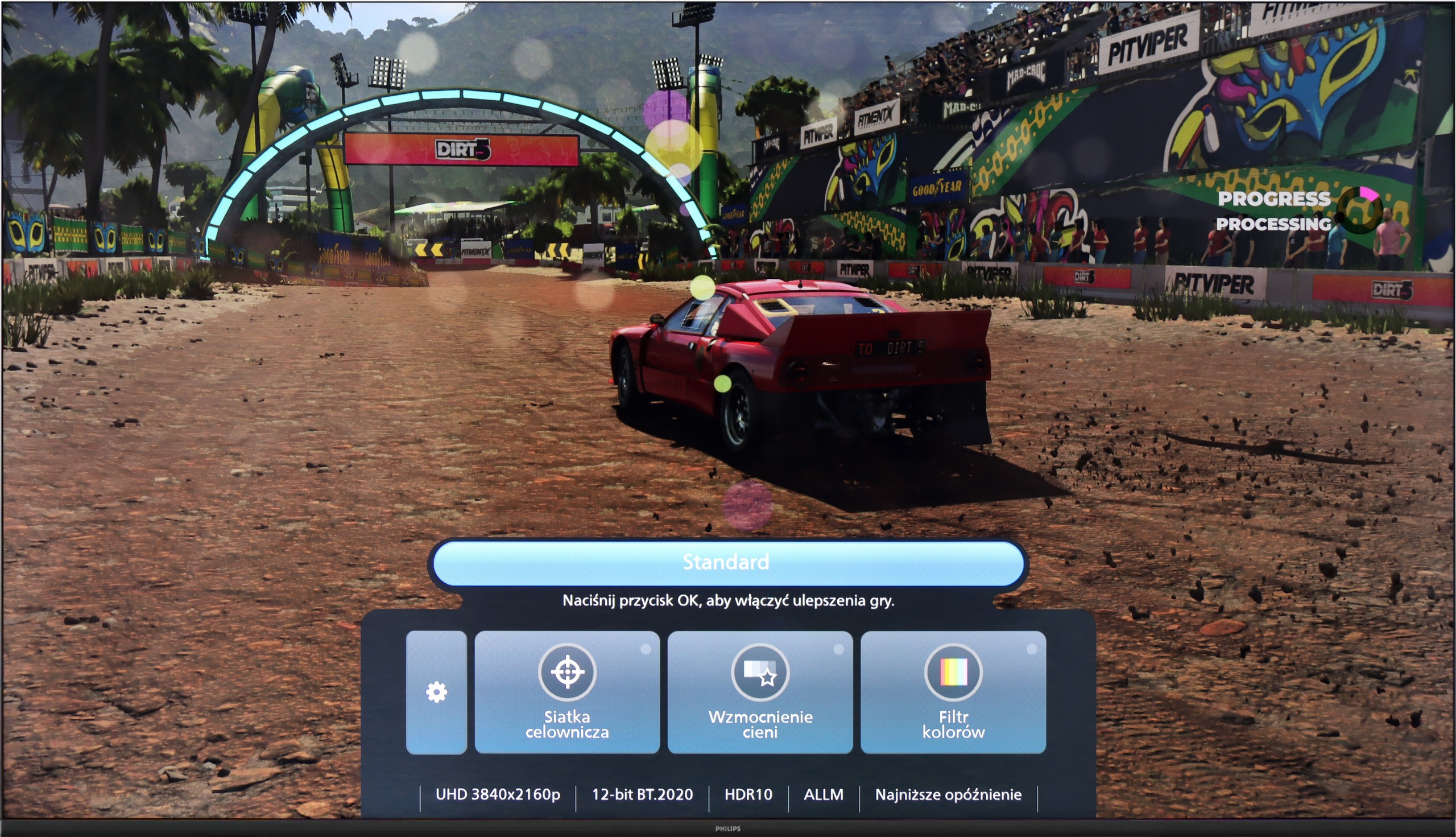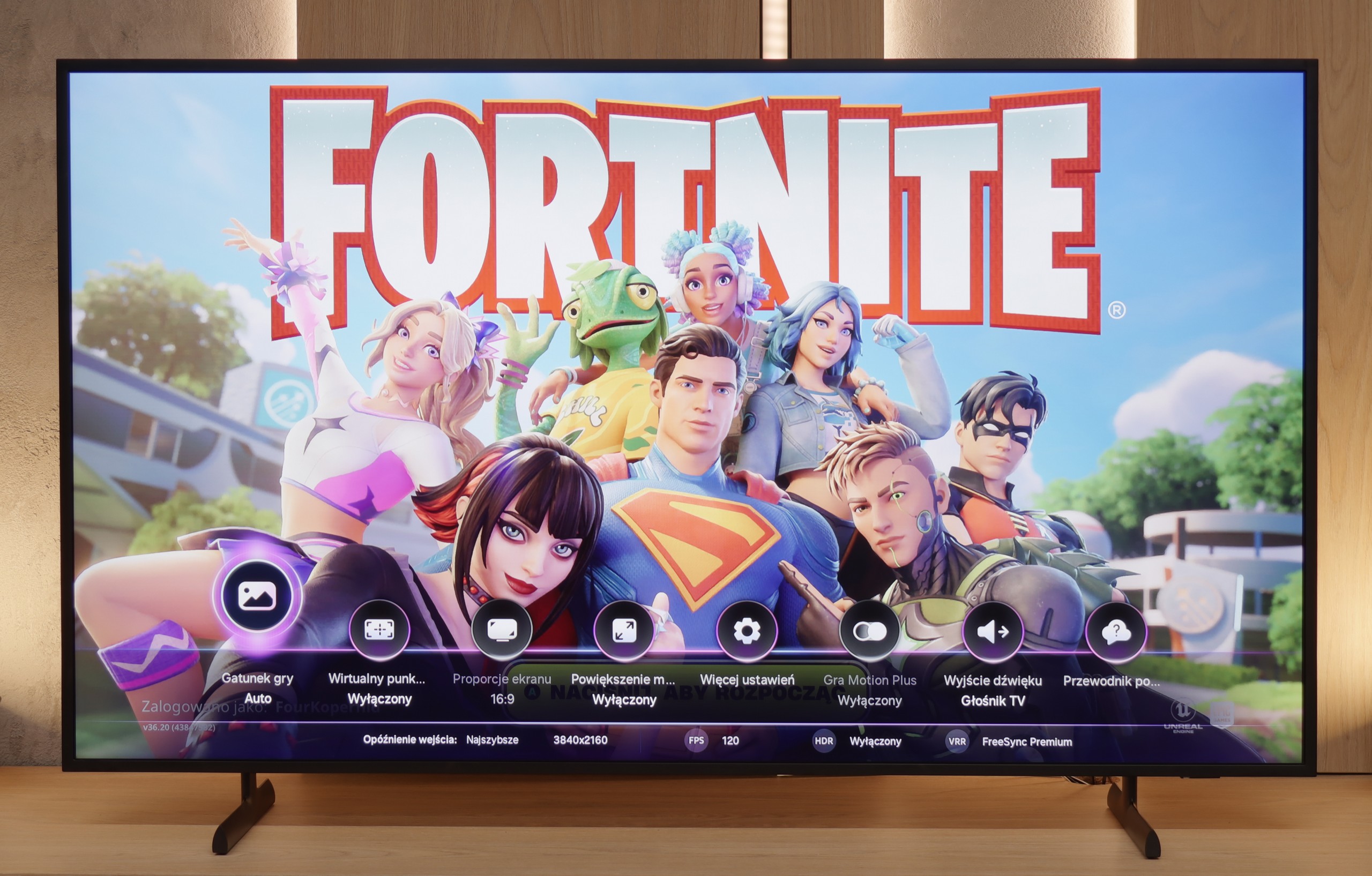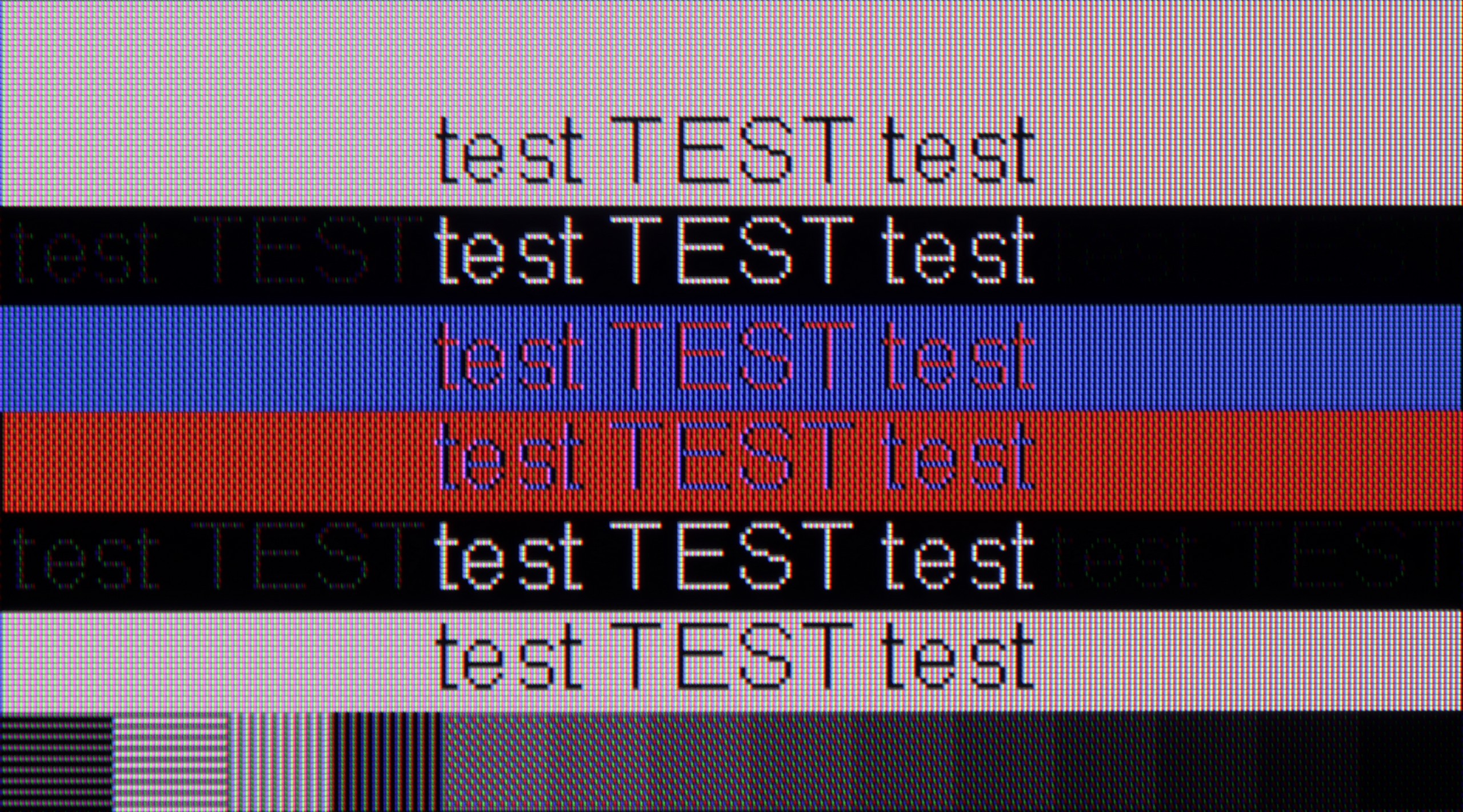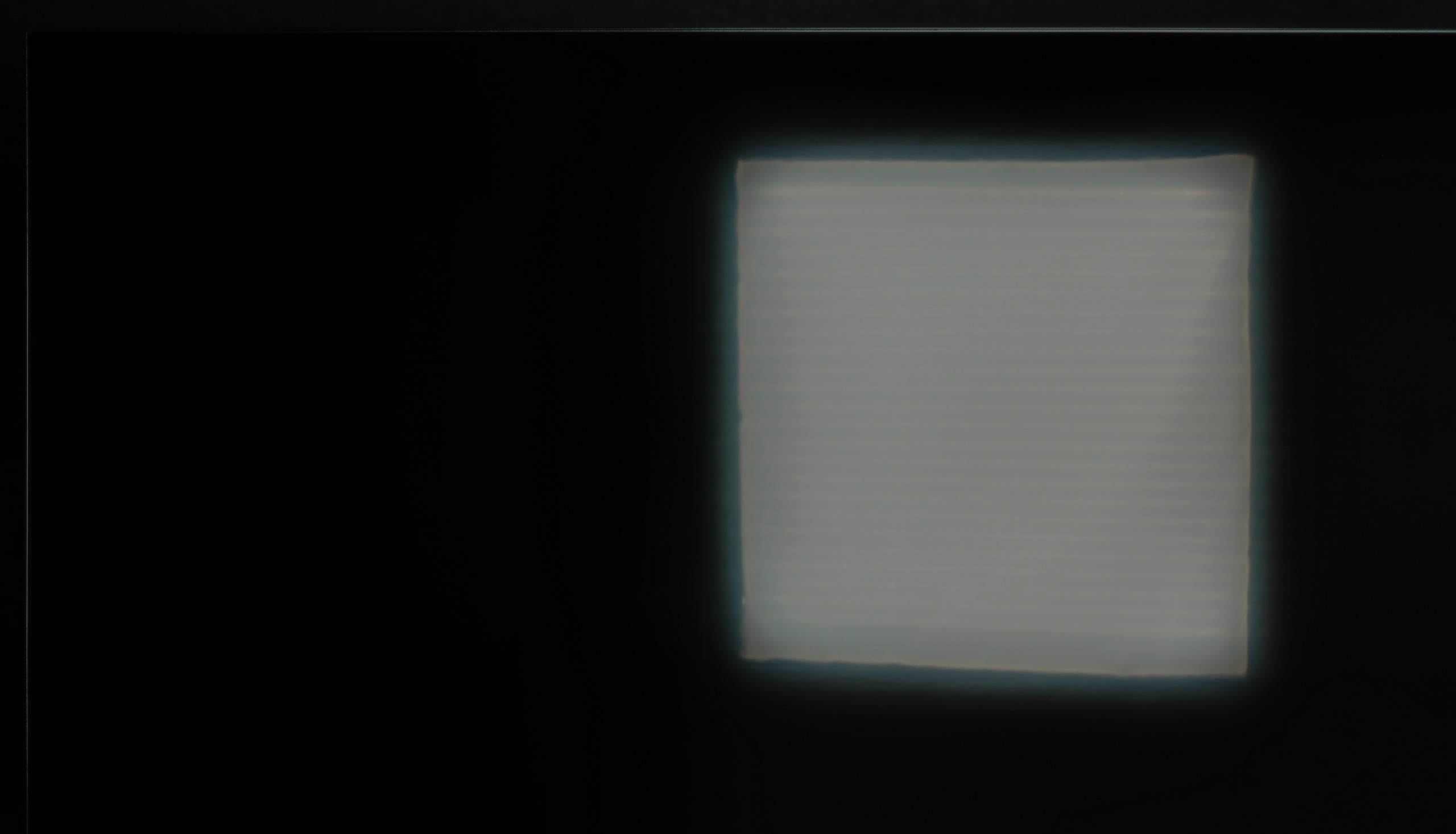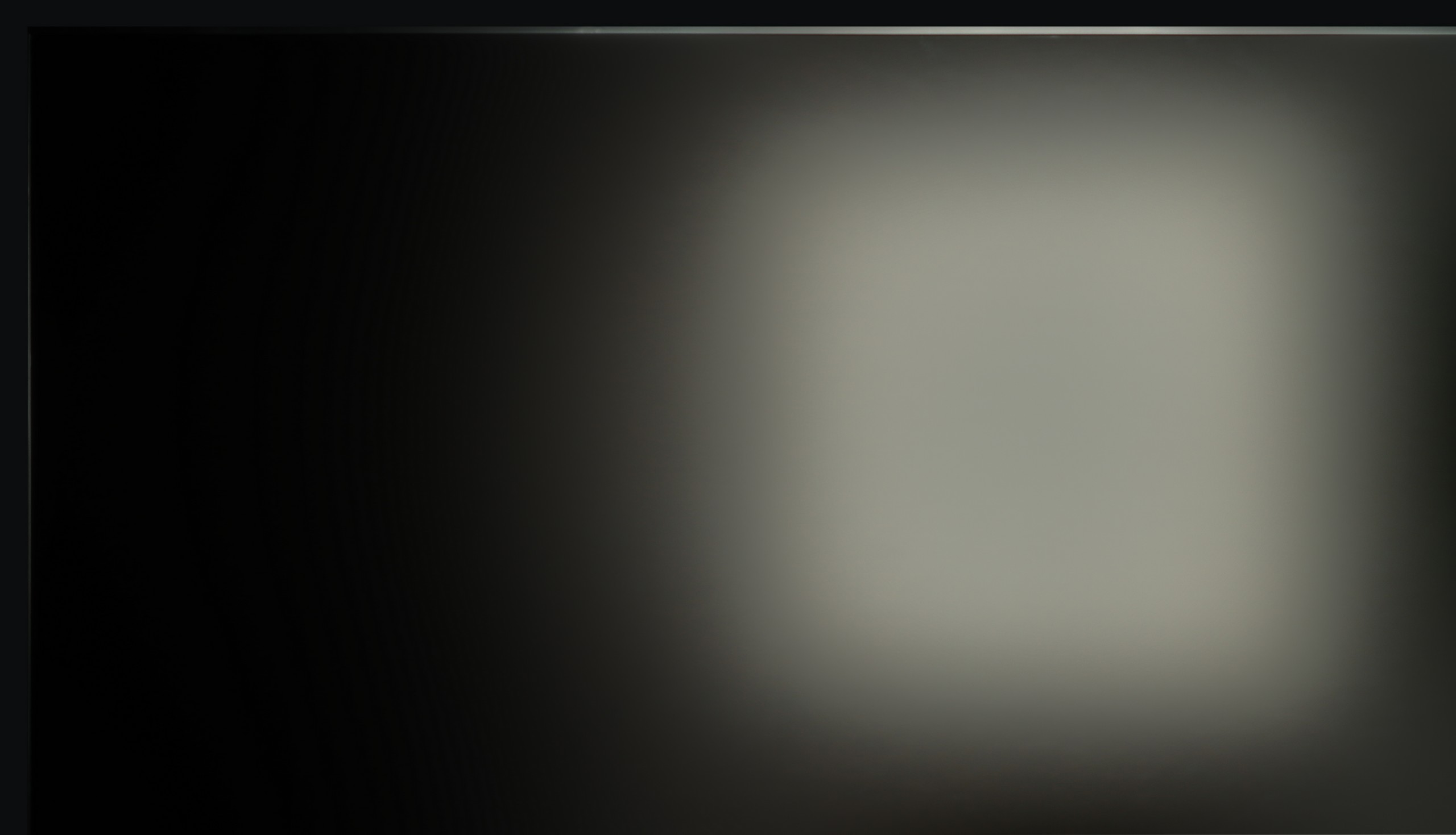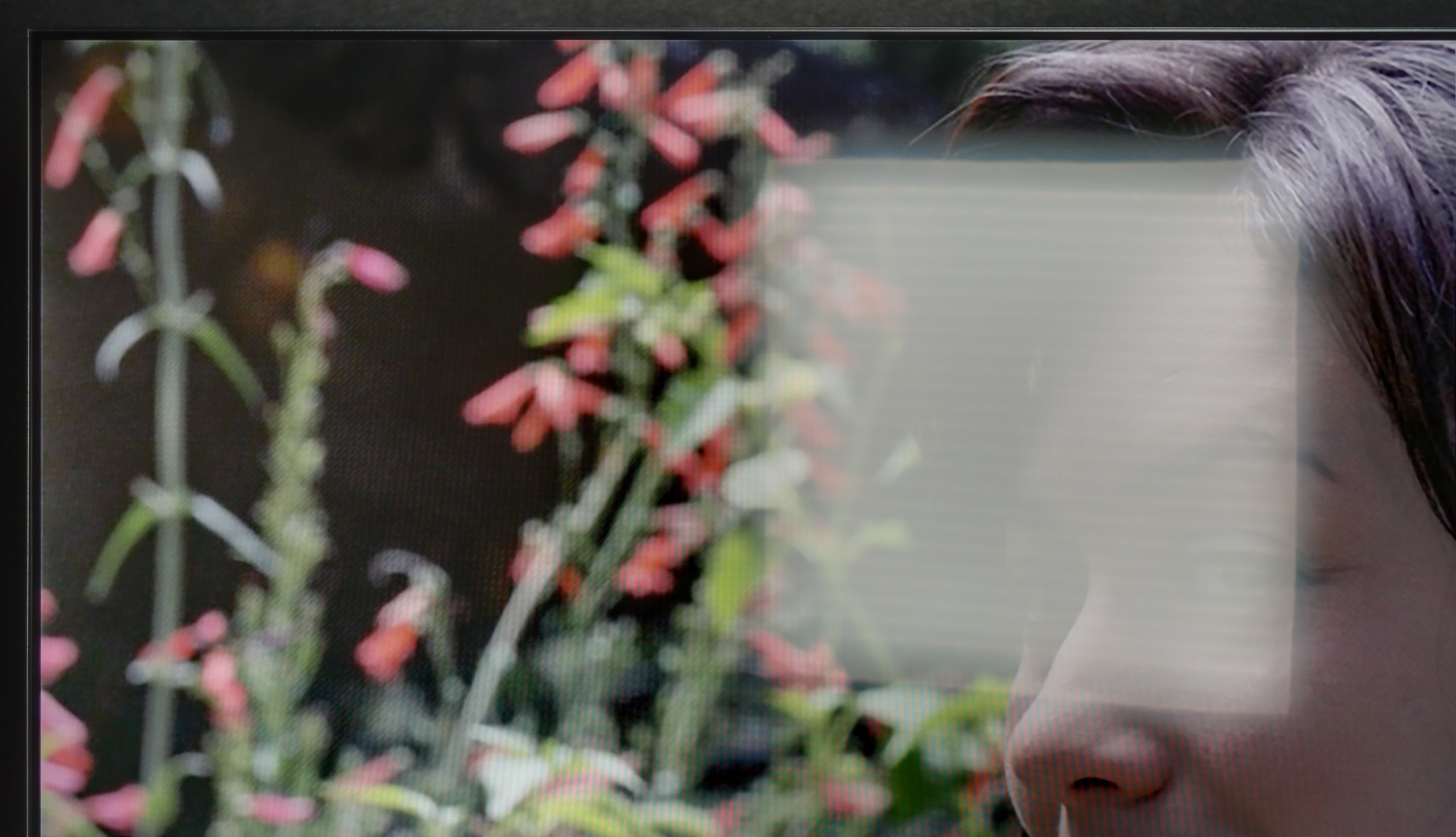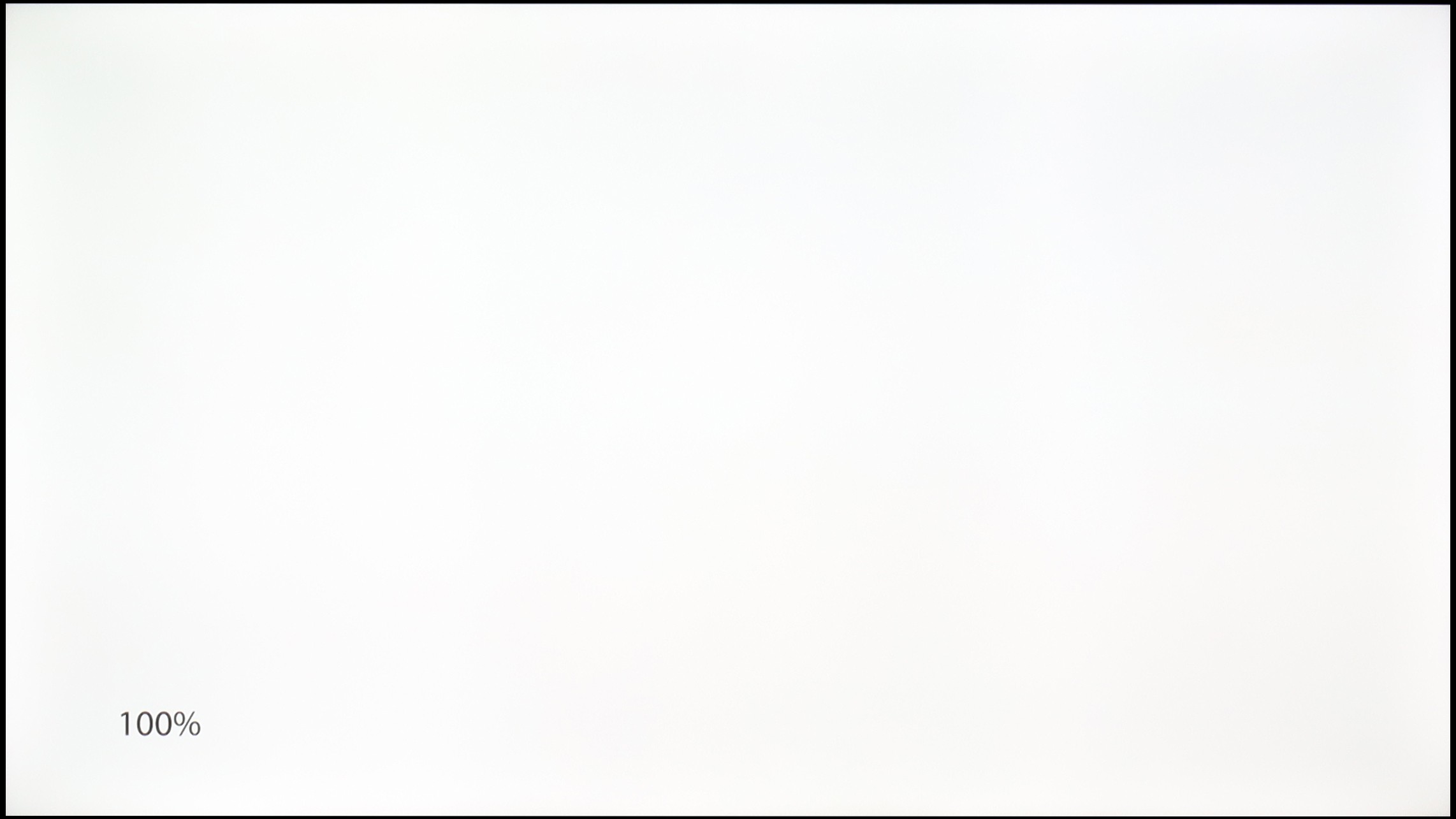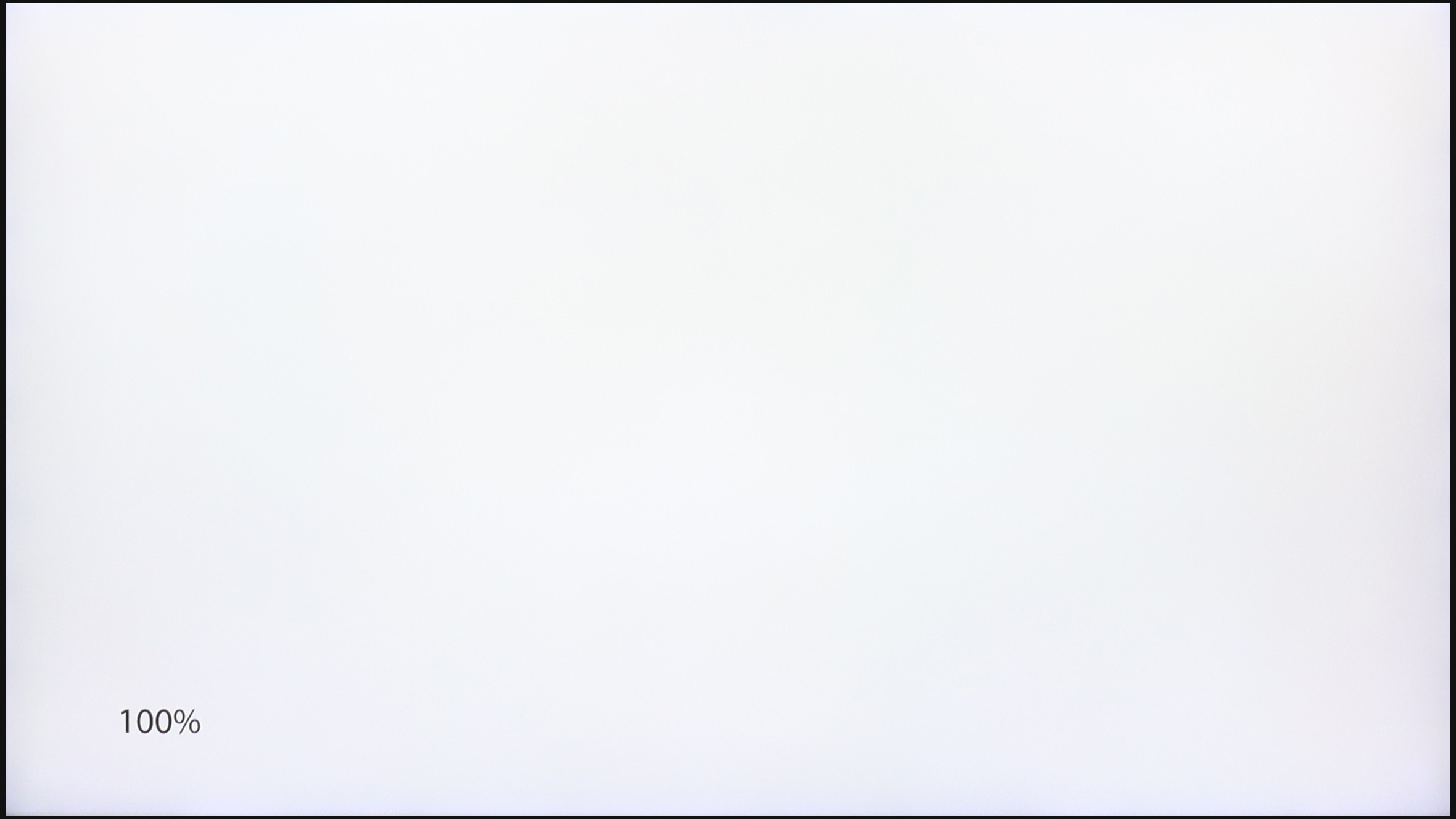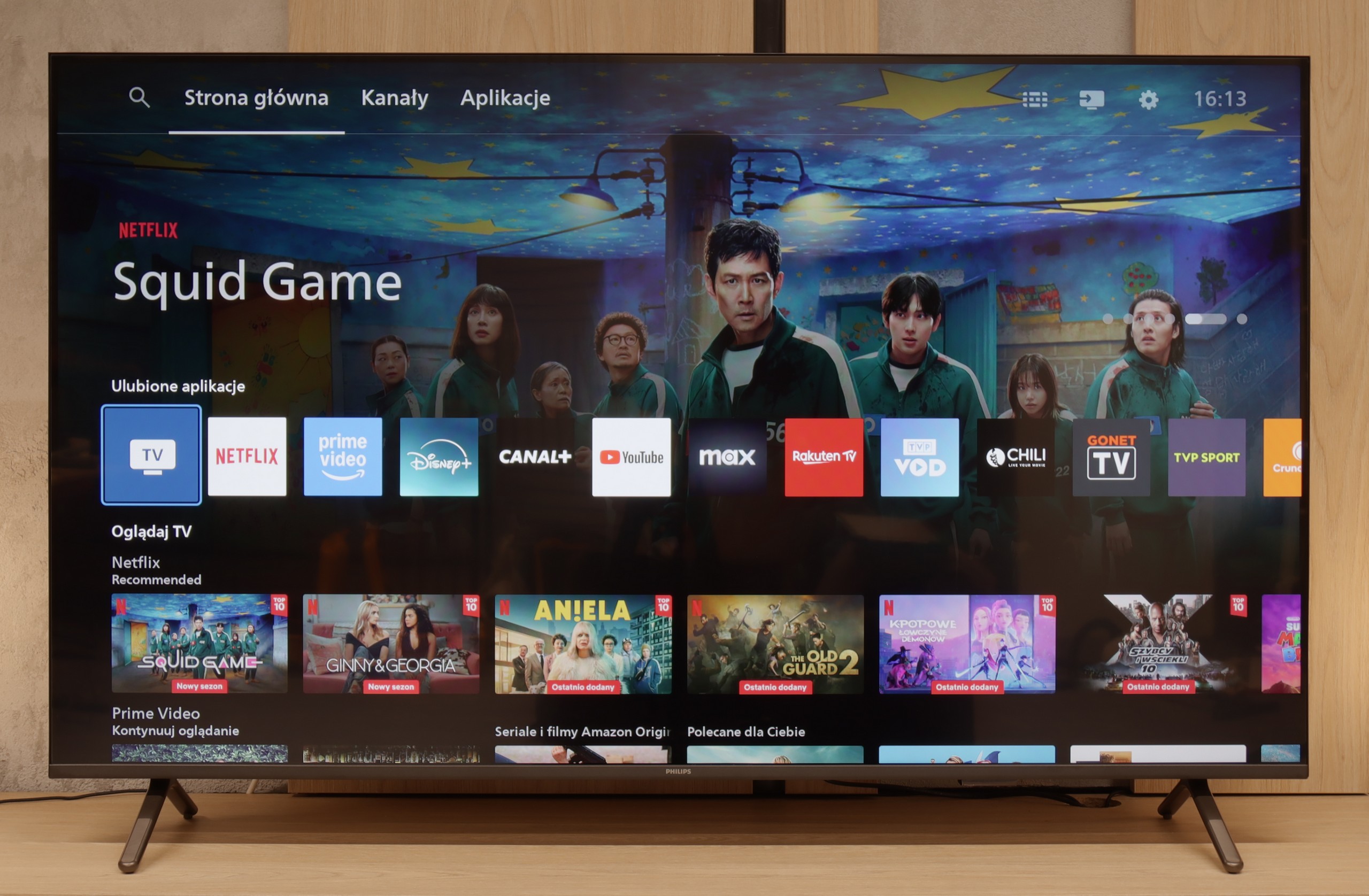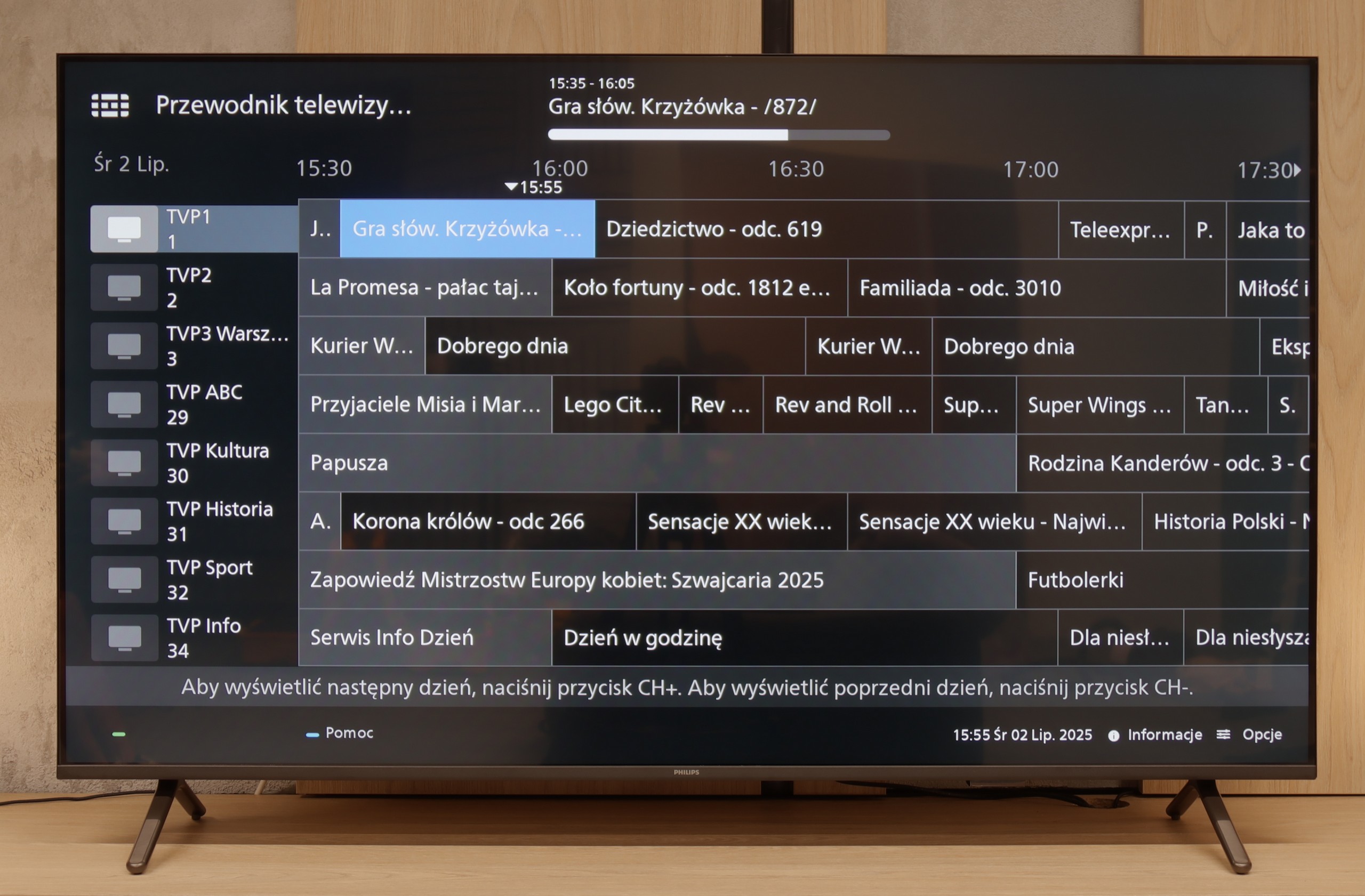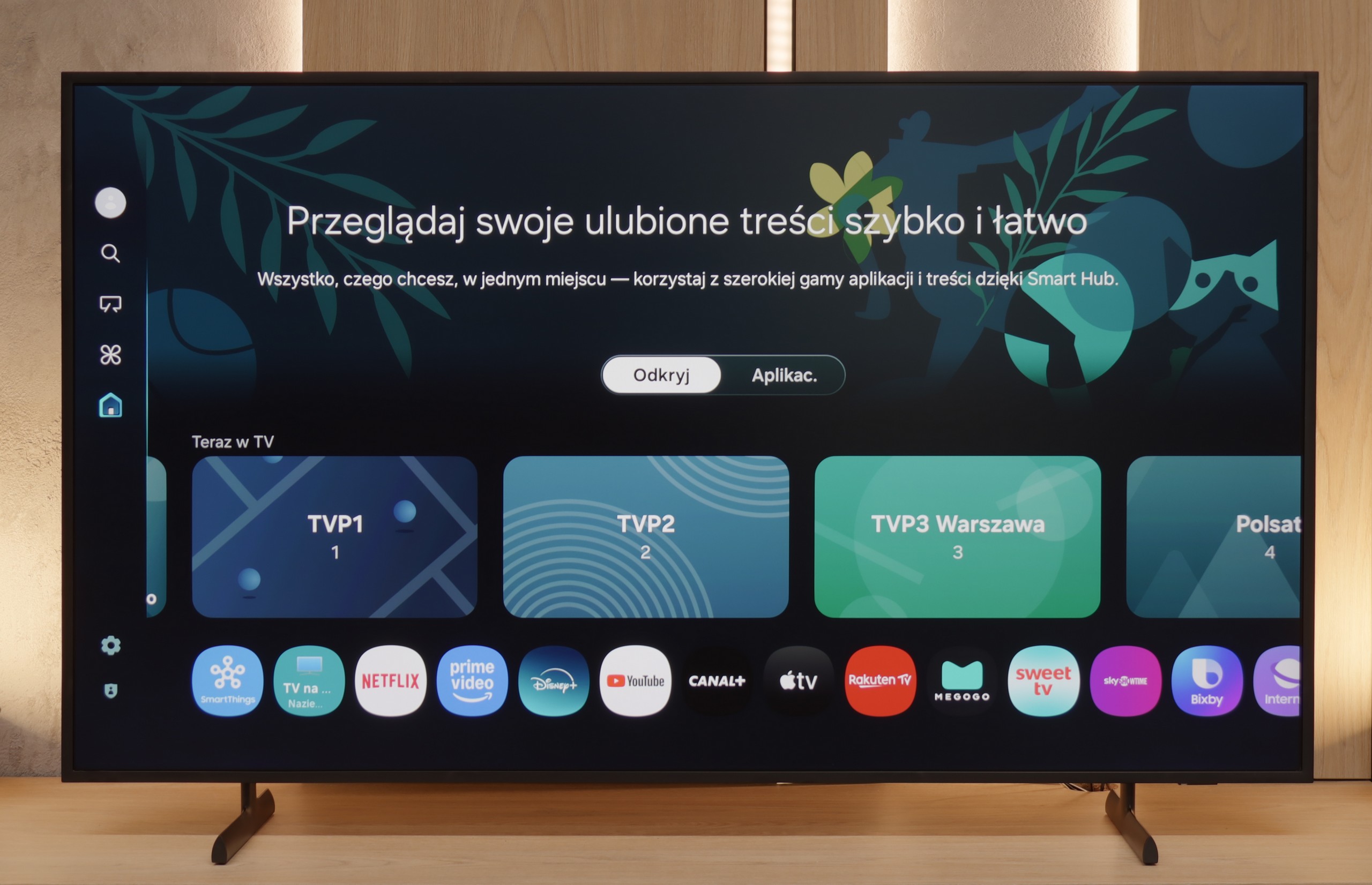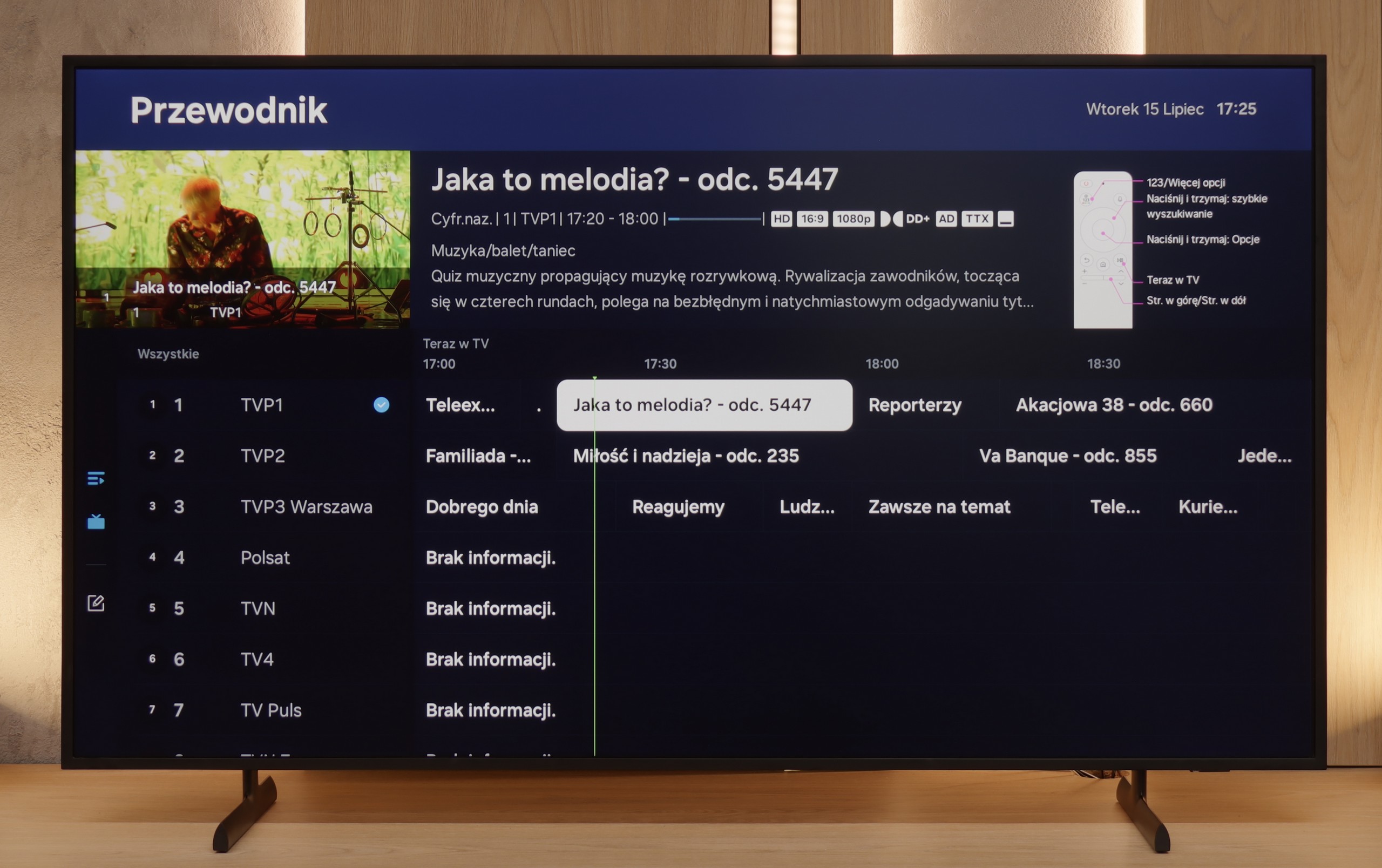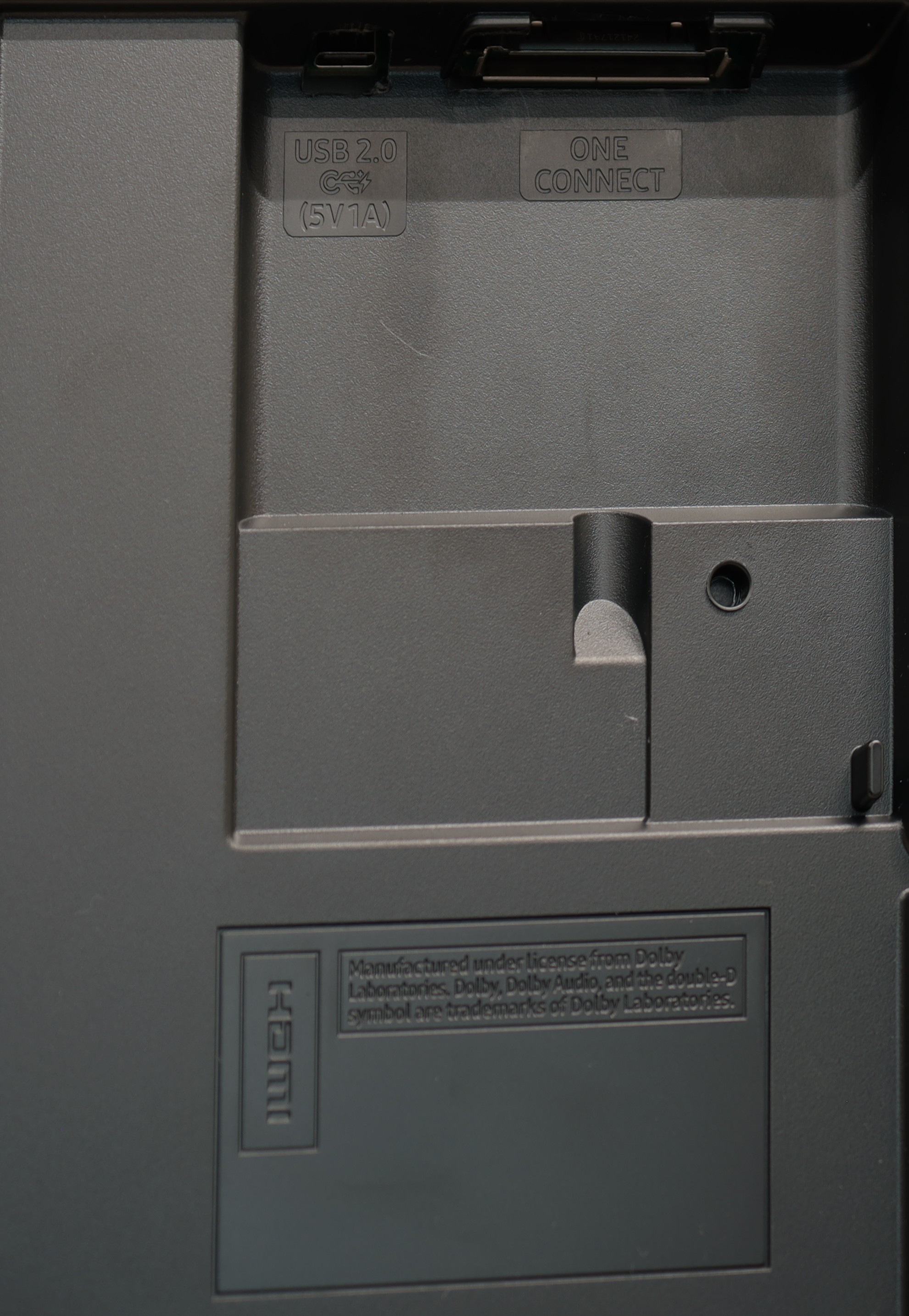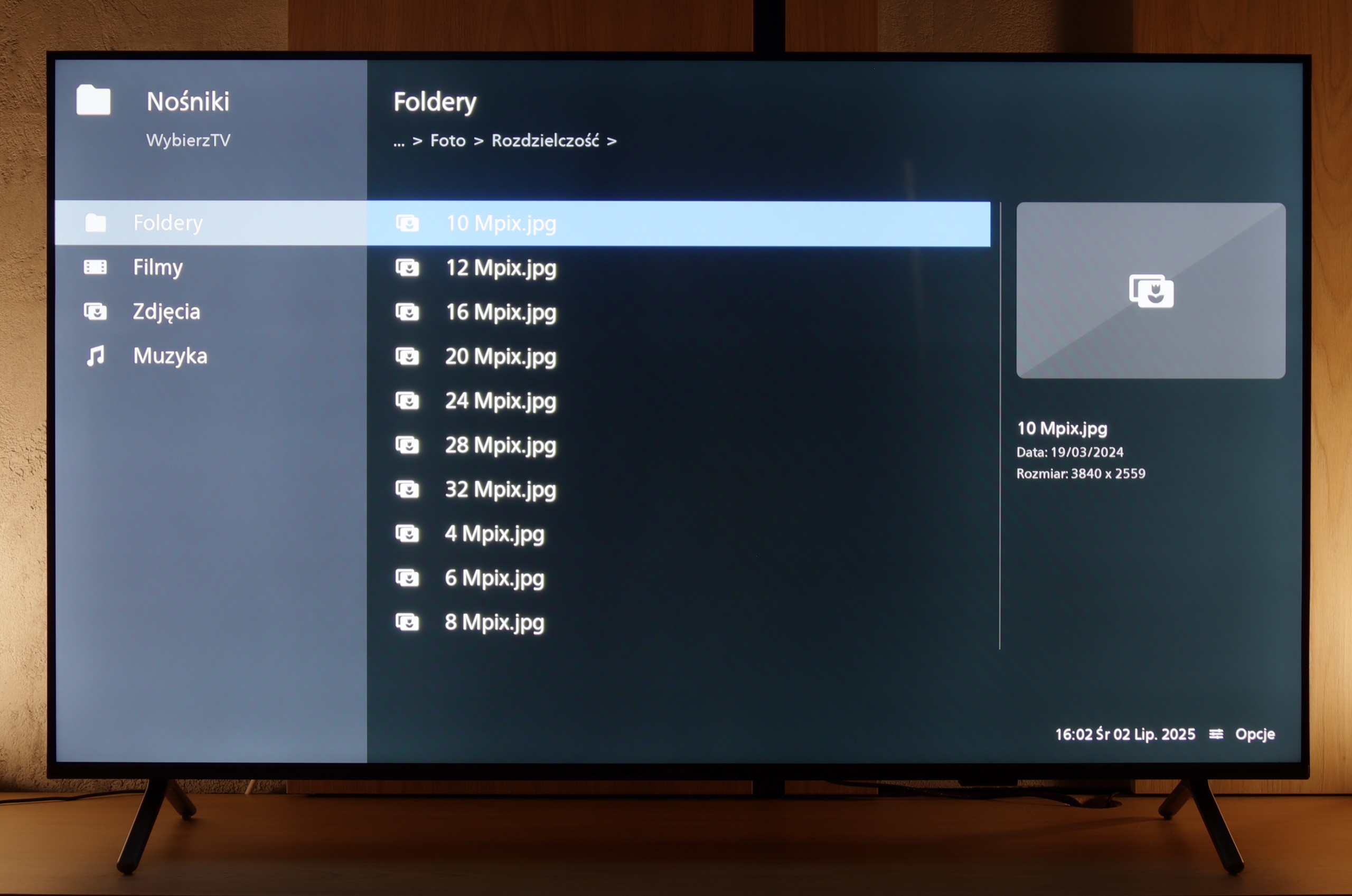Ambilight because that's exactly where we need to start, it's the biggest reason to buy the PUS8500. The three-sided backlighting on the TV looks fantastic, especially in the evening. It creates atmosphere, masks contrast imperfections, and makes viewing simply more enjoyable. Even if the black isn’t perfect here, at high contrast the native VA panel is just good. On top of that, there’s really decent input lag and several gaming features like ALLM and VRR. Although there’s no HDMI 2.1 or 120Hz panel, casual gaming should be a pleasure. Especially since it plays responsively and without delays. Let’s add full support for audio formats – it includes both Dolby Atmos and DTS, so soundbar owners also have something to be happy about.
But let’s not kid ourselves – this is still a budget TV, and at times that’s quite obvious. Brightness is average – not so weak that you can't watch anything, but if you hit an exceptionally sunny day, watching under such conditions without blinds can be problematic. However, in our opinion, the biggest disappointment with the PUS8560 is the Titan OS operating system. Despite the fact that the system debuted some time ago, some things just didn’t work – for example, screen mirroring from a phone despite the manufacturer stating that this feature is present. There are fewer apps than the competition, and the system itself feels a bit clunky. Generally, it seems to do something already, but it clearly lacks refinement.
Of course, this isn’t a TV meant to compete with top models. But if someone is looking for something simple, with the cool atmosphere that the Ambilight system provides, it’s quite a fair proposition. You just need to know what to expect and accept the compromises, of which there are plenty here.
Samsung The Frame 2025 is a TV like no other – and even though it has competition now, it still does it best. The matte panel, flush with the wall, and one thin cable thanks to the One Connect module make the device resemble a piece of art more than any other screen. The Art Store app continues to offer the best scans of artworks on the market (even if they are subscription-based), and with interchangeable frames, we can match the TV to the interior almost like furniture. When it comes to the picture itself, because after all, we are also talking about a regular TV, there are no major changes, but also no disappointments compared to last year's model LS03D. The Frame still offers high native contrast and solid brightness at 600 nits, which combined with the matte coating provides very comfortable daytime use. The colours are not as vibrant as in glossy screens, but compared to competitive matte constructions – they fare the best. A novelty is the 144 Hz refresh rate, though in practice it will mainly benefit PC gamers. And indeed – in terms of features for gamers, The Frame has nearly everything: low input lag, support for variable refresh rate (VRR), automatic game mode (ALLM), Game Bar, and a unique motion smoother designed for gaming. Unfortunately, not everything is as perfect as it might seem. Why? Because the HGiG mode is missing, which suddenly disappeared from the latest version of the Tizen system. And here Samsung really should respond, as for many gamers this is a key element in choosing a screen. And we fully understand that. Although LS03F The Frame 2025 does not bring major revolutions, it is still a unique TV that, aside from its appearance, offers a quite solid picture and advanced gaming features. It’s just a pity that year after year we also receive new compromises.
